Your browser is out-of-date! You must upgrade to a different browser to experience this site.
All Chapters
- Boating Terminology
- Boat Hull Types & Designs

Boat Engine Types Explained
Boat Size Classifications
- Boat Capacity
- Hull Identification Numbers
- Boat Registration & Titling
- Life Jacket Types & Designs
- Children's Life Jacket Recommendations & Requirements
- PFD Rules & Requirements
- Life Jacket Fitting & Care Guidelines
- Inflatable PFD Types & Tip
- Boat Fire Extinguishers
- Boat Backfire Flame Arrestor
- Boat Ventilation Systems
- Boat Navigation Light Types & Requirements
- Unpowered Boat Navigation Lights
- Visual Distress Signals
- Marine Distress Signals
- Weather Conditions
- Small Craft Advisory
- Boat Maintenance Tips
- Towing & Trailering
- Launching & Retrieving
- Pre-departure Checklist
- Rendering Assistance
- Capsizing/Falls Overboard
- Cold Water Immersion
- Fire Prevention
- Running Aground Prevention
- Accident Reports
This site requires JavaScript. Your browser either doesn’t support JavaScript or you have it turned off.
For this page to function correctly, please enable JavaScript and then refresh the page.
Engine Types
Now let's look at the three types of engines you'll find on powered boats: outboard, inboard and stern drive engines.
What is an Outboard Engine?
This is an outboard engine. Outboard engines are mounted on the transom of the boat, outside of the boat's hull, which is why they're called "outboards".
Outboard engines are used to both power and steer the boat. To steer an outboard you need to move the entire engine. On smaller boats, this is often done using a hand tiller, while on larger outboards a steering wheel adjusts the direction of the engine.
What is an Inboard Engine?
Inboard engines are located inside the boat's hull. Inboard engines are four-stroke automotive engines that have been modified for use on the water. These engines power a drive shaft that is connected to a propeller.
Unlike an outboard, an inboard engine does not also steer the boat. Instead, inboards have a rudder or rudders that are located behind the propeller and controlled by a steering wheel.
What is a Stern Drive Engine?
The last type of engine is the stern drive, which is sometimes called an "inboard-outboard" because it shares features of both types of engines. Similar to inboards, stern drive engines use a four-stroke automotive engine mounted on the inside of the hull to power the boat.
Like an outboard, there is a drive unit used to steer the boat. To steer a stern drive, turn the steering wheel, which then turns the drive unit, and determines the direction of the boat.
What is a Jet Drive Engine?
A Jet Drive engine uses water to propel and steer the boat. Water enters in through an intake on the bottom of the boat and is accelerated through the jet drive unit at the transom, thrusting the boat forward.
Steering is achieved by changing the direction of the stream of water as it leaves the jet unit. REMINDER - Because steering is dependent on the water jet, Jet Drive engines will lose some steering control at low speeds.
Boat Hull Types


- How To Fish & Boat
- Register Your Boat
- Get Your Fishing License
- Places To Boat And Fish
- Connecticut
- District Of Columbia
- Massachusetts
- Mississippi
- New Hampshire
- North Carolina
- North Dakota
- Pennsylvania
- Rhode Island
- South Carolina
- South Dakota
- West Virginia
- How to Catch Fish
- How to Tie Fishing Knots
- Fishing Gear and Tackle
- How to Fish with Lures
- How to Fish with Live Bait
- Fishing Safety
- Fishing Tips
- When to Fish
- Types of Fishing
- Fishing and Conservation
- Fishing Resources
- When to Saltwater Fish
- Saltwater Bait and Lures
- Saltwater Fishing Tackle
- Types of Saltwater Fishing
- Saltwater Fishing Gear
- Saltwater Fish Species
- Types of Freshwater Fishing
- When to Freshwater Fish
- Freshwater Bait and Lures
- Best Freshwater Fishing Gear
- Fly Fishing Basics
- Fly Fishing Flies
- Fly Fishing Gear
- Fly Casting
- Ice Fishing Basics
- Ice Fishing Gear
- Ice Fishing Techniques
- Boating Basics
- How to Boat
- Boating and Water Safety
- Choose Your Boat
- Use Our Boat Explorer Tool
- Get on the Water
Types of Boat Engines
Choosing the right type of boat engine for your vessel is very important. Both weight and horsepower will have an impact on the performance of your boat. Learn about different types of boat engines in this section.
Boat Engine Sizes
When choosing the appropriate boat engine for your vessel, consider the size and weight of the boat and remember that weight includes your passengers, fuel and gear. A good rule of thumb is to come as close as possible to the maximum horsepower that your boat is rated for.
Boat Engine Power
When looking at gasoline engines (outboard, stern drive or inboard), there are three distinct types of fuel delivery systems on the market. Each fuel delivery system is unique, and there are benefits to each system.
Direct Fuel Injection
- Low emissions
- Excellent fuel economy
- Instant turn-key starting
- Smooth idling
- Reduced vapor lock in warmer climates
- Automatically adjusts to altitude, air and water temperatures
- Superior throttle response and power
- Self-diagnosis systems available
- Sealed fuel system (helps to eliminate fuel oxidation)
Electronic Fuel Injection (EFI)
- Uniform air and fuel distribution
- Usually excellent fuel economy
- Cold engine start
- Self-diagnosing systems availability
- Low emissions (especially four-stroke)
Carbureted Fuel Systems
- Lowest initial cost
- Simple design
- Higher emissions than an EFI or DFI system
- Poor fuel economy when compared to an EFI or DFI system
A boat engine is one of the most essential components of a vessel. For this reason, it is important to understand the different options available and which boat engine will fit your fishing needs. The two main factors to consider are the weight and horse power of your engine. These are the main types of engines available.
Diesel Inboard Engines
Diesel engines rely on compression to power the engine. Their design is similar to a traditional gas engine, with crankshafts and cylinders and pistons; however, the fuel systems on a diesel engine are completely different and more complex.
Diesel engines range in size and horsepower. While they’re widely used in other parts of the world, in the United States, they’re typically found in boats larger than 35 feet. The main reason diesel engines are not used in smaller boats is weight. In general, a diesel engine weighs more than a gas engine. However, they are used in larger vessels because of their ability to produce torque.
- No carbon monoxide to worry about in cabins or on the back of boats
- Excellent torque
- Long life expectancy
- Low running costs
- Generally run at lower RPM than traditional gas engines
- Non-explosive fuel
Gas Inboard Engines
These boat engines are modified for maritime use. Gasoline inboard engines range from 90 horsepower to over 1000 horsepower per engine and are used in a variety of boats, from tow sport boats to large cruisers.
In an inboard engine configuration, the engine sits amidships, with a drive running through the bottom of the boat to a propeller, and a separate rudder used for steering. A transmission is often used to transfer power from the engine to the propeller. Exhaust is passed through the stern of the boat. Inboards are common for tow sports such as waterskiing, wakeboarding as they allow the propeller to be brought forward of the back of the boat, providing area for platforms to assist skiers entering and exiting the boat.
- Simple drive system can lower maintenance
- No means to trim propeller
- Quiet and out of the way

An outboard is a portable, self-contained unit consisting of an engine, gear case and propeller, which is attached to the transom of a boat.
A growing number of outboard engines have a four-stroke design, but many are still conventional two-stroke engines that burn oil as a lubricant along with the fuel. New technology two-stroke outboards are direct-injection engines and burn more than 75% cleaner than conventional two-stroke outboards.
Steering of boats with outboards is controlled by a tiller or steering wheel that swivels the entire engine to direct propeller thrust. Outboards have more power per pound of weight than inboard engines.
Stern Drives

Stern drives are known also as inboard/outboards (I/Os) because they combine features found on both inboard and outboard engines. Stern drive engines are four-stroke automotive engines adapted for marine use and are mounted inside the boat.
A stern drive engine is attached through the transom to a drive unit (also called an outdrive) that is essentially the lower unit of an outboard. The engine turns a driveshaft that is attached to a propeller at the other end.
Steering of stern drive boats is controlled by the outdrive, which swivels like an outboard engine to direct propeller thrust. Stern drives have quieter and more fuel-efficient engines.
Jet Boat Engines

Jet propulsion systems have the advantage of having no propeller, which can be dangerous to people in the water and to marine life.
They are usually inboard engines that take in water that flows through a pump powered by an impeller. The water is then discharged at high pressure through a nozzle that propels the boat forward.The nozzle swivels to provide steering for the boat. Most personal watercraft use jet drives.
When power is not being applied, a jet-driven vessel loses its steering because it is the stream of water that steers the boat. Keep hands, feet and hair away from the pump intake and do not operate in shallow water.
Content courtesy of www.boat-ed.com and www.DiscoverBoating.com
Learn about different types of hulls in our next section.
KEEP LEARNING

First Catch Center Trailer Gallery
FCC Trailer Photo Gallery

How to Tie a Duncan Knot
Learn to tie a Duncan knot by following these five simple steps. Watch our new video.

Welcome to Angler Academy!
No one said you can’t bring fishing inside! There’s lots of fun activities we can do right from home
FIND PLACES TO BOAT AND FISH
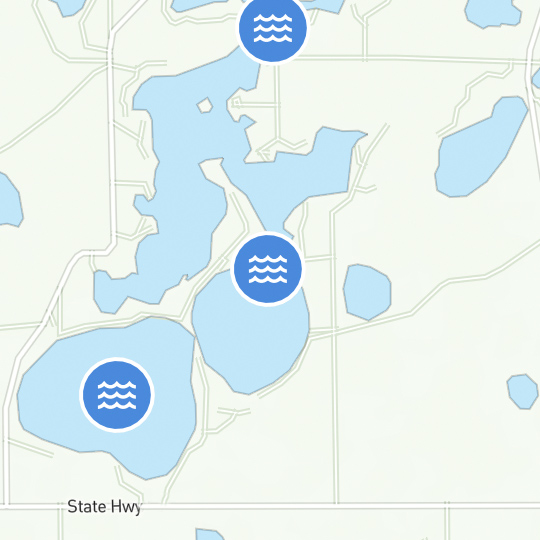
KNOW YOUR FISH
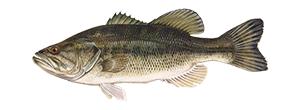.png?lang=en-US&ext=.png)
Largemouth Bass
NEWSWAVES SIGNUP
Stay up-to-date on RBFF’s fishing and boating programs and initiatives with the monthly NewsWaves newsletter. Read about relevant stories on the fishing and boating industry, RBFF’s work to and increase participation, the latest research and trends on fishing and boating audiences and participation and marketing insights, tips and content.
Please complete the following fields to subscribe to our newsletter.
Download this Resource
To download this free resource, please fill out the form below:
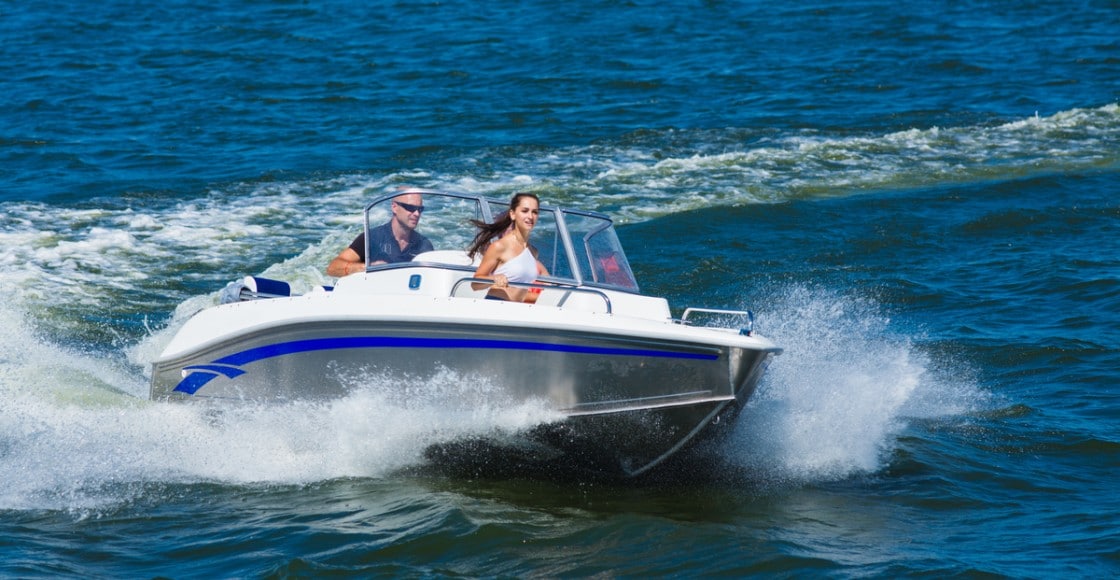
The 7 Best Motors for My Motorboat

Table of Contents
Important Things to Keep in Mind about Engines When You Rent a Motorboat
If you decide to rent a motorboat , we are generally talking about the kinds of outboard motors or engines that come with these boats. Some of the major engine manufacturers are Mercury, Yamaha, Evinrude, and Suzuki, and we’ll look at some of their latest offerings when we talk about it below. Most motorboat motors offer generous warranties of up to six years, so they are generally very reliable. The biggest differences between all of the motors are in terms of horsepower and efficiency. Fuel range and economy are also concerns if you decide to rent a motorboat for a big group of people. Here are seven of the best outboard motors that you should consider when renting a motorboat, especially if you want to purchase a motorboat in the near future.
Mercury Motors

The new Mercury 4.6-liter V8 Verado 450R features a 2.4-liter twin-screw supercharger and a Sport Master gearcase. It is lightweight at only about 70o pounds. It’s available with a 25-inch shaft or a 20-inch shaft. The three-year warranty should give you confidence that your motor will last a long time on the water. Also, it runs on 89-octane pump gas, which makes it easy to refuel. The 450R is one of the best motors you can get these days.
Evinrude Motors

Evinrude offers a new 150 horsepower E-TEC, which is a 1.9-liter three-cylinder direct-injected two-stroke engine. It has a good fuel efficiency of 12 mpg at a fast pace on a 20-foot boat. These 150 horsepower outboard motors can be used on all kinds of boats because they can be controlled via a mechanical steering cable, external hydraulic, integrated power steering, and even a tiller. All in all, these Evinrude motors are pretty simple to operate!
Torqueedo Travel 1103C Motors
Torqueedo is known for big outboard motors called Deep Blue motors, which are up to 80-horsepower equivalent. However, those types of motors are only designed for the megayachts of billionaires. While one of those 80-horse motors and its BMW-developed battery pack sells for more than $50,000, the new Travel 1103C is under $3,000, and it is perfect for any boat that weighs less than about 3,400 pounds. The new Travel 1103C has an onboard 915 Wh lithium battery, and it can run for six hours at half-throttle, which could mean up to 20 miles of range (depending on your boat). The Torqueedo is perfect for a small motorboat—it only makes 33 dB of noise and weighs less than 40 pounds. What’s more, you can extend the battery life by charging it with a solar panel while you are boating.
Yamaha XTO Offshore Motors

Because some modern center console boats stretch well beyond 50 feet, Yamaha has built an engine designed for these types of boats: the 425 horsepower XTO Offshore . This is a 5.6-liter V8 with direct fuel injection. It also features integrated power steering, and it can weigh up to 1000 pounds. According to Yamaha’s performance report, four of these motors on the back of a 41-foot Regulator center console will allow it to reach a speed of almost 65 mph.
Suzuki DF350A Motors

Although Suzuki is better known as a mainstream value brand, the new DF350A motor shows that they are trying to get into the high-horsepower game. The DF350A is a big 4.4-liter naturally aspirated V6, which uses two counter-rotating propellers to increase hookup and negate torque effects. This can be important and economical for single-engine boats. For example, on a Sea Pro 239, the DFA350A pushed the boat to 54 mph and got 3.35 mpg while cruising in the high 20s. Quad 350s pushed an aluminum Gaudet 38 to 65.8 mph. So, the DF350A offers a lot of horsepower for the price. While the MSRP is $31,565, it is possible to get slightly used DF350As for much less than that.
Hangkai 6.5HP Outboard Motors

These are some of the best motors you can buy because they are powerful yet fuel-efficient. The 6.5 Hp 4 stroke engine is well-designed with an ergonomic handle and a comfortable grip, which helps you carry it easily, especially because it is relatively light. It can power a boat carrying a load of 4 people, but the boat will go faster when fewer people are onboard. The motor has a 12-liter gas tank that uses pure gasoline. It has a pump impeller with a start rope and start key for easy ignition. It also features a water cooling system to prevent overheating.
Sea Dog Water Sports Motor
If you want a boat primarily for maneuvering through narrow areas and for towing people, then this Sea Dog motor will provide all the necessary power you need. It is a 2 stroke outboard engine with 2.5 horsepower, enough to power a small motorboat. It has a 1.2-liter fuel capacity , and it uses gasoline and oil mixed at a ratio of 25:1. It is air-cooled and has an economical, compact design that makes it easy to carry around. It has a CDI ignition system as well as a recoil (manual) start system. Its idling speed is 3,000 rpm, and the propeller’s diameter is only 18cm, which allows it to run quietly with minimal noise.
Make the Most of your Motorboat Rental!
Just like the car industry, the boating industry is full of all kinds of motor manufacturers that compete to build and sell the best motors for their market. When it comes to selecting a motor, it all depends on the kind of motorboat you might be buying. Big brand names like Mercury, Yamaha, Evinrude, and Suzuki have dominated the industry for decades, but now we are starting to see companies like Hangkai making a splash. It is a great idea to rent a motorboat through Boatsetter and do the research and try out all of these brands by seeing how they look on the back of a boat at some of the country’s biggest boat shows .
If you are considering these types of motors for a boat you might want to purchase, it is a good idea to rent a motorboat through Boatsetter so that you can try out some of your options before you buy your boat. Also, remember that the costs of owning a boat can be higher than you might expect. You will need to factor in some other aspects of boat ownership: storage, boat insurance , maintenance, and all of the various licenses you might need. Boatsetter offers a unique service that matches boat owners with potential renters. Be sure to take advantage of our services today! If you browse through our impressive fleet , you will be sure to find a wide range of boats near you that will greatly exceed your motorboat expectations!

Boatsetter empowers people to explore with confidence by showing them a world of possibility on the water. Rent a boat, list your boat, or become a Boatsetter captain today.
Browse by experience
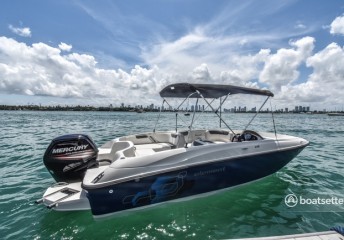
Explore articles

How to Fish with Lures

5 Best Winter-Sun Destinations in the US

How Boating is Good for Your Health & Wellbeing
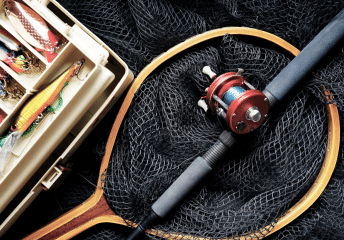
10 Facts About Fishing Most People Don't Know
Last Updated on May 20, 2022 by mdellinger
- 2024 BOAT BUYERS GUIDE
- Email Newsletters
- Boat of the Year
- 2024 Freshwater Boat and Gear Buyers Guide
- 2024 Boat Buyers Guide
- 2024 Water Sports Boat Buyers Guide
- 2023 Pontoon Boat Buyers Guide
- Cruising Boats
- Pontoon Boats
- Fishing Boats
- Personal Watercraft
- Water Sports
- Boat Walkthroughs
- What To Look For
- Watersports Favorites Spring 2022
- Boating Lab
- Boating Safety

Four Electric Boat Motors Compared
- By Randy Vance
- Updated: September 17, 2020

Electric marine propulsion is rapidly advancing in market share while providing a fun and unique boating experience not available from internal combustion power.
Electric Motors Then
You might be surprised to learn that electric boats have been around since 1838. Inventors from Prussia, England and America began making vessels with lead-acid batteries—tons of lead-acid batteries per vessel—to move passengers quietly and efficiently. But the internal combustion engines invented in the late 1800s were more powerful and convenient, and with the exception of Elco electric motors, electric power fell away in popularity. In 1934, Minn Kota manufactured the first electric outboard. Then, in the 1960s, bass tournament fishing popularized big-horsepower gas engines for speed, and electric trolling motors for precise boat handling. You might say the fishermen were ahead of the curve by about 60 years on hybrid boats.
Electric Motors Today
We are focusing on production models that can be easily installed by a do-it-yourselfer or OEM without special training. Lithium-ion batteries can be volatile if not properly installed, so some companies require their trained tech to do that.
Electric outboards are expensive, and while we’ve listed the purchase cost, the batteries available are too numerous to name or price, and can cost more than the motor.
A mathematic equation easily converts kilowatt-hours to horsepower, and our math revealed the calculated horsepower to be considerably less than the equivelant horsepower suggested by manufacturers.

Torqeedo provides completely integrated motor, battery and controls. Electronically controlled systems give its motors greater range per battery capacity and, similar to a fuel gauge, help operators conserve energy when needed or tell them when they can splurge on maximum throttle. The batteries are provided by BMW, but it is Torqeedo’s control system that manages output, heat and recharge operations to protect and optimize battery capacity and motor performance.
Range of Power: Outboards from Ultralight 403 at 400 W (about 1 hp) to Deep Blue at 50 kW (about 80 hp equivalent with 20 percent hole-shot boost), and inboards up to 100 kW (about 135 hp).
Most Popular Motor: Torqeedo’s Cruise 10 ($8,999) puts out 10 kW, or about 14 hp, but performs comparably to a 20 hp outboard thanks to Torqeedo’s software. In remote control, it is popular among pontoon boaters in particular, and commonly installed on pontoons used on neighborhood lakes requiring electric propulsion. Through digital controls, peak output is boosted beyond nominal output for a short time to improve acceleration at the hole shot, then returns to nominal output for optimal heat, range and speed control. A side- or top-mount controller—akin to the throttle—will cost $1,399, by the way.
Best Battery: The Torqeedo 48-5000 (5,000 Wh) lithium-ion battery ($5,159) is rated IP67 waterproof; connecting two or more in parallel extends the range.
Battery Compatibility: Compatible with any lithium-ion or AGM battery bank providing 48 volts, the Torqeedo can only operate in smart mode, measuring discharge, heat and other factors to dynamically manage power with Torqeedo batteries. With nonproprietary battery banks, Torqeedo motors mathematically, and less accurately, estimate range and consumption.
Chargers: The 2213 charger ($899) can recharge a 48-5000 battery in under 10 hours. It is rated IP65 water-resistant. The 2212-10 charger ($2,199) can recharge it in two hours.

Elco Motors
Elco has been building electric outboards for over 100 years—a figure that seems implausible to boaters who are beginning to see electric propulsion for the first time. The company’s engineering philosophy has remained the same: build plug-and-play systems, relying on battery power preferred by the customer, and design its motors to fit existing motor mounts, or provide standard transom clamps to make repowering simple and seamless.
Range of Power: Elco builds electric outboards with tiller or remote controls from 3.7 kW (about 5 hp) to 37 kW (about 50 hp). Elco’s inboards range from EP 6 to EP 100, with horsepower equivalents from 6 to 100.
Most Popular Motor: The EP 70 inboard ($15,995) can replace inboard diesel kickers and trawler motors, providing a top speed of 8 to 10 mph (7 to 8.5 knots) and a range of 23 to 41 miles. Its peak output is 51.5 kW (about 69 hp), and continuous output is 29.75 kW (about 40 hp). It needs nine 8-D 12-volt AGM batteries for a total of 108 volts. Lithium-ion batteries are also compatible in comparable volts and amps.
Best Battery: Battery banks from Lithionics are most commonly selected for new builds, and an EP-12 Victron AGM Deep Cycle 12V/220Ah bank is ideal ($5,409).
Battery Compatibility: Elco batteries are completely brand agnostic and connect with any quality battery bank providing the motor’s power demand. However, lithium-ion batteries still provide the most efficiency, along with full power to complete discharge. Even though their upfront investment is often more than double that of AGM batteries, the cost per charge is comparable while also lightening the boat and bringing better performance and range.
Chargers: The ElCon UHF3300 (1x) charger (starting at $825) takes three to four hours to restore battery banks, and the PFC 5000 fast charger reduces the time to two to three hours.

ePropulsion
This company boasts five electric propulsion systems engineered at the Hong Kong University of Science and Technology, and entered the market in 2013. HKUST is also known as the incubator of many electronic products, including the DJI drone. Persistent engineering has brought new innovations to the marketplace.
Range of Power: The smallest offering from ePropulsion is a strap-on stand-up-paddleboard motor. Mainstream power includes two large outboards boasting 1 kW (about 1.35 hp) and 3 kW (about 4 hp) power, two pod drives of the same output, and the most popular portable Spirit 1.0 Plus.
Most Popular Motor: The Spirit 1.0 Plus ($1,999 including charger) is ePropulsion’s top-selling motor, ideal for small vessels, square-stern canoes, tenders and more. It’s a 1 kW motor that the company says offers 3 hp equivalent power with an industry-first direct-drive brushless motor. That’s a quiet arrangement, making the motor lighter and more efficient. It’s got a 75-minute run time at full speed, making 22 miles on a quickly exchangeable, integrated and included floating battery. Take a spare battery ($899) for longer range.
The Navy 3.0, ePropulsion’s latest motor, is 3 kW, or about 4 hp, though ePropulsion claims 6 hp equivalence. It’s available in tiller-steered and remote-control models. Its direct-drive, no-gear-case motor was a breakthrough in electric outboards, using a brushless motor that produced less sound and drag, and increased power and efficiency, offering a more serene experience.
Best Battery: There are three E-Series 48-volt batteries offered: The E40 ($1,200) provides 2,048 Wh, the E80 ($2,000) provides 4,096 Wh, and the E175 ($4,000) offers 8,960 Wh. The data-cable connections in ePropulsion batteries give battery management, enhancing range and speed.
Read Next: ePropulsion Lithium Iron Batteries
Chargers: Chargers available from ePropulsion are 10-, 20- and 30-amp modes ranging from $300 to $620.
Read Next: Learn About Garmin and Lowrance Electric Motors

Minn Kota Motors
Minn Kota has been making electric outboard motors since 1934, and its first model was a gear-driven, transom-mounted motor with a tiller. As time progressed, it improved motors slowly until the tournament bass-fishing craze began in the early 1960s. In that time, the motors have been popular as primary propulsion for dinghies and utility boats used for tenders, or positioning the boat for casting.
Range of Power: Models today range from simple tiller- steered motors to digitally remote-controlled motors complete with autopilot features and smartphone compatibility. The Vantage is the company’s primary propulsion motor.
Most Popular Motor: The Vantage ($1,549.99) is not Minn Kota’s most popular motor, but it’s a top contender in the boat market where electric propulsion is desired or required. The tiller-steered Vantage is ideal for use as a kicker for trolling, or propulsion for a tender or small johnboat. The variable-speed motor is digitally controlled to manage and conserve power for optimum range. Forward, neutral, reverse, and power trim to raise it are easily accessible on the tiller of this 24-volt motor. For some reason, Minn Kota does not list specs such as amps, kilowatts or watt-hours.
Best Battery: Minn Kota doesn’t offer batteries, but the motor is compatible with any battery bank producing 48 volts.
Battery Compatibility: Lead-acid, wet-cell batteries are still the most commonly used for small electric motors, but AGM (absorbed glass mat) batteries are more durable, offer more charge cycles, and are quickly replacing wet-cell batteries. Lithium-ion batteries shave 75 percent of the weight of lead-acid batteries, deliver full power to total discharge, and are actually more economical per charge cycle in spite of a 100 percent premium over AGMs.
Chargers: An MK 345 PC Precision Charger ($449.99) provides three-bank charging at 15 amps per bank.
- More: Boats , elco , electric boats , Engines , epropulsion , minn kota , torqeedo

Center-Console vs. Bowrider

Boating On Board: 2024 Sea-Doo Switch Cruise Limited

Twin Vee Debuts New GFX2 Line of Power Catamarans

Sailfish Boats Debuts 232 CC

Base-Layer Shirts for Boaters

Considerations for Bringing Dogs On Board

- Digital Edition
- Customer Service
- Privacy Policy
- Cruising World
- Sailing World
- Salt Water Sportsman
- Sport Fishing
- Wakeboarding
Many products featured on this site were editorially chosen. Boating may receive financial compensation for products purchased through this site.
Copyright © 2024 Boating Firecrown . All rights reserved. Reproduction in whole or in part without permission is prohibited.

How Does Motorboat Work? (A Guide To Its Mechanism)
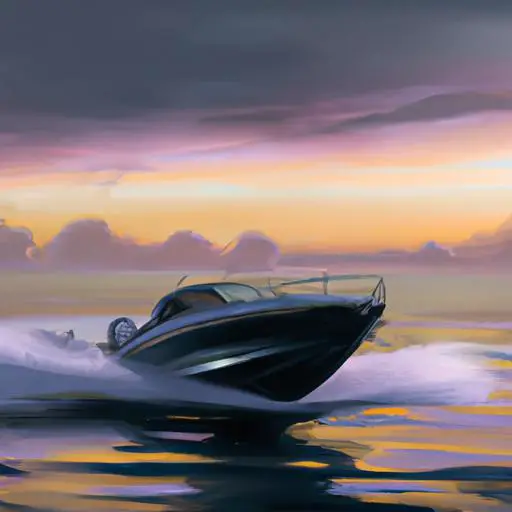
Have you ever seen a motorboat out on the water and wondered how it works? Or perhaps you’re considering taking up motorboating as a hobby? Whatever your reasons, understanding the mechanism of a motorboat is essential to your safety and enjoyment out on the water.
This guide will cover the basics of motorboat operation, including an overview of the different types of motorboats, the components of a motorboat, and how it actually works.
Plus, we’ll dive into the pros and cons of motorboating and provide some safety tips to get you out on the water with confidence.
So, let’s get started and explore the wonderful world of motorboating!
Table of Contents
Short Answer
A motorboat is powered by an internal combustion engine which uses fuel to create energy that powers a propeller.
The engine is connected to the propeller by a shaft, and the engine controls the speed of the propeller.
When the engine is turned on, the propeller spins and creates thrust which pushes the boat forward.
The boat is steered with a rudder, which is connected to the engine.
By using the rudder, the driver can control the direction of the boat.
What is a Motorboat?
A motorboat is a type of boat that is powered by a motor.
This motor can be an internal combustion engine or an electric motor.
This motor is used to turn a propeller located at the back of the boat, which then propels the boat forward.
In addition to providing the power to move the boat, the engine also powers other components on the boat such as lights, pumps, and other electrical systems.
Motorboats are a great way to explore the water and can be used for a variety of activities such as fishing, waterskiing, and simply cruising around.
They are great for taking a leisurely trip with friends and family or for more adventurous pursuits such as exploring the open waters or fishing.
Motorboats come in a variety of sizes, shapes, and power levels.
The size and power level of the motorboat will determine the type of activities that it can be used for.
For example, a larger and more powerful motorboat will be better suited for waterskiing and other high-speed activities, while a smaller and less powerful motorboat may be better suited for fishing or cruising around in calmer waters.
No matter what type of motorboat you choose, it is important to understand how a motorboat works and how to properly maintain and operate one.
With proper maintenance and operation, a motorboat can provide years of enjoyable and safe boating experiences.
Types of Motorboats

Motorboats come in a variety of shapes and sizes, from large yachts to small dinghies, and each type of motorboat has its own unique features and benefits.
Yachts are typically larger and more luxurious boats that are used for leisure and entertainment activities such as cruising, fishing, and swimming.
Dinghies are smaller and more economical boats that are used for shorter trips and fishing on smaller bodies of water.
There are also other types of motorboats that cater to specific uses such as racing boats, houseboats, and pontoon boats.
The type of engine used in a motorboat will depend on the size and purpose of the boat.
Larger boats will typically use an internal combustion engine, which is more powerful and efficient than an electric motor.
Smaller boats and dinghies will often use an electric motor, which is quieter and more efficient than an internal combustion engine.
Both types of motors have their own advantages and disadvantages, so it is important to consider the size and purpose of the boat before deciding which type of motor to use.
In addition to the type of motor used, it is also important to consider the type of fuel the boat will use.
Diesel and gasoline are the two most common types of fuel used in motorboats.
Diesel is typically more efficient and has a lower emissions output, while gasoline is less expensive and easier to find.
It is important to consider the type of fuel that is available in the area where the boat will be used and to make sure it is compatible with the engine.
Components of a Motorboat
A motorboat is powered by an internal combustion engine, or electric motor, and consists of several key components.
The most important of these components is the engine, which runs on gasoline or diesel fuel to power the boat.
The engine is usually connected to a drive shaft, which is connected to a propeller at the rear of the boat.
This propeller is what moves the boat forward and is the main source of propulsion.
Other components on the boat include the steering wheel, throttle, and fuel and electrical systems.
The engine is the heart of the motorboat and is responsible for powering all the other components.
It is connected to the drive shaft, which is connected to the propeller.
The engine also powers the lights, pumps, and other electrical systems on the boat.
The fuel system is responsible for delivering the fuel to the engine and is usually either a carburetor or fuel injection system.
The electrical system is responsible for powering the lights, pumps, and other electrical components on the boat.
The steering wheel is used to control the direction of the boat and is connected to the rudder.
The throttle is used to control the speed of the boat and is connected to the engine.
The fuel and electrical systems are also connected to the engine and are responsible for supplying the necessary fuel to the engine and powering the lights, pumps, and other electrical components.
The propeller is the main source of propulsion and is connected to the drive shaft, which is connected to the engine.
All of these components work together to provide the boat with power and propulsion.
The engine is the main source of power on the boat and is responsible for powering the other components and propelling the boat forward.
The fuel and electrical systems are responsible for supplying the necessary fuel to the engine and powering the lights, pumps, and other electrical components.
The steering wheel, throttle, and rudder are used to control the direction and speed of the boat.
Finally, the propeller is the main source of propulsion and is connected to the drive shaft, which is connected to the engine.
How Does a Motorboat Work?

A motorboat is a type of boat that is powered by an engine.
Most motorboats use an internal combustion engine or an electric motor to propel them through the water.
The engine converts its power into a rotational force which turns a propeller located at the stern of the boat.
This propeller then creates thrust, pushing the boat forward through the water.
The engine also powers other components on the boat such as lights, pumps, and other electrical systems.
With a motorboat, you can enjoy a variety of activities such as fishing, waterskiing, and simply cruising around.
This makes them a great way to explore the water and have fun.
In order to understand how a motorboat works, we must first look at the components that make it up.
The main component of a motorboat is its engine.
This is the power source that drives the boat forward and powers other components.
The engine is typically located in the stern of the boat, and is connected to the propeller via a shaft or drive system.
The propeller is an important part of the motorboat’s propulsion system.
It is the component that provides the forward thrust that pushes the boat through the water.
The propeller is connected to the engine via a shaft or drive system, and is typically located at the stern of the boat.
The motorboat also contains other components such as the steering system, which is used to turn the boat in different directions.
This is typically done using a rudder or a wheel, and is connected to the engine via a cable or linkage.
The motorboat also contains other components such as lights, pumps, and other electrical systems.
In summary, a motorboat works by using its engine to turn a propeller located at the stern of the boat.
This creates thrust, pushing the boat forward through the water.
This makes motorboats a great way to explore the water and have fun.
Pros of Motorboating
Motorboating is a great way to enjoy the water and explore the outdoors.
Motorboats come with a variety of benefits including the ability to travel at faster speeds, the ability to cover larger distances, and the ability to access remote areas that may not be accessible by other means of transportation.
Motorboats are also a great way to have fun and relax with friends and family, as they provide ample space to move around and enjoy activities such as fishing, waterskiing, and simply cruising around.
Motorboating is a relatively easy activity to learn, as most motorboats are equipped with user-friendly features such as power steering and automatic trim tabs which make controlling the boat easier than ever before.
Motorboats also come with a variety of safety features such as navigation lights, flares, and life jackets, to ensure a safe and enjoyable experience on the water.
Finally, motorboats are a cost-effective way to enjoy the water, as most motorboats are relatively affordable, and the cost of fuel and maintenance is relatively low compared to other forms of transportation.
Additionally, motorboats are relatively easy to store and maintain, and depending on the size of the boat, can be stored in a garage or even on a trailer, making it an ideal choice for those looking to explore the water without breaking the bank.
Cons of Motorboating

The primary downside of motorboating is the cost associated with it.
An internal combustion engine is quite expensive, and if you plan on using your motorboat for a variety of activities, the cost can quickly add up.
Additionally, the cost of fuel and maintenance can be high, especially if you dont take the time to properly care for your motorboat.
Another potential downside of motorboating is the noise pollution.
The sound of an engine can be quite loud, and can be disruptive to nearby wildlife and other boaters.
Additionally, the engine can be quite smelly, as it emits exhaust fumes, and this can be unpleasant for people in the area.
Finally, motorboating requires a certain level of skill and knowledge.
It is important to understand the basics of operating a motorboat, and to know basic safety and navigation rules.
Without this knowledge, it is easy to get into trouble on the water, and potentially put yourself and others in danger.
Safety Tips for Motorboating
With motorboating being a popular way to explore the great outdoors, safety is of the utmost importance.
The following tips can help make motorboating a safer and more enjoyable experience for everyone involved.
First and foremost, it is important to wear a life jacket while motorboating.
This is especially true for children and non-swimmers, as the waters can be unpredictable and a person can be thrown overboard unexpectedly.
Inflatable life jackets are available for extra comfort and convenience.
It is also important to be aware of the local laws and regulations regarding motorboating.
Different areas have different rules and regulations that must be followed, so it is important to research these before heading out on the water.
It is also important to check the weather before heading out.
Strong winds and choppy waters can create hazardous conditions, so it is important to make sure the conditions are favorable before heading out.
Additionally, check the fuel level before heading out and make sure the boat is properly stocked with supplies in case of an emergency.
Finally, it is important to stay alert while motorboating.
Be aware of other boats in the area and pay attention to the direction of the waves.
If the waves are crashing against the side of the boat, it could be a sign that the boat is too close to shore.
It is also important to stay aware of your surroundings and be prepared to act quickly if necessary.
By following these safety tips, motorboating can be a safe and enjoyable experience for everyone involved.
Be sure to stay alert, follow local laws and regulations, and wear a life jacket to ensure a safe and enjoyable trip.
Final Thoughts
Motorboating is a great way to explore the waters and take part in activities like fishing and waterskiing.
With the right knowledge and safety precautions, motorboating can be a fun and rewarding experience.
Now that you know how a motorboat works and the benefits and risks associated with it, all that’s left to do is get out there and have some fun!
James Frami
At the age of 15, he and four other friends from his neighborhood constructed their first boat. He has been sailing for almost 30 years and has a wealth of knowledge that he wants to share with others.
Recent Posts
Does Your Boat License Expire? Here's What You Need to Know
Are you a boat owner looking to stay up-to-date on your license requirements? If so, youve come to the right place! In this article, well cover everything you need to know about boat license...
How to Put Skins on Your Boat in Sea of Thieves? (Complete Guide)
There is a unique sense of pride and accomplishment when you show off a boat you customized to your exact specifications. With Sea of Thieves, you can customize your boat to make it look like your...

1-24 of over 1,000 results for "Outboard Boat Motors"

6HP 2Stroke Heavy Duty Outboard Motor Short shaft Boat Engine Fishing Boat Engine Aquaculture Outdoor Adventure Boat Tiller Control w/Water Cooling System for Superior Corrosion Protection

6.5HP 4 Stroke Outboard Motor, 123CC Hangkai Boat Engine Motor Short Shaft Outboard Fishing Boat Kayak Engine Water Cooling System,Funnel Kit Save Fuel Reduce Costs

YIYIBYUS 6HP 2 Stroke Outboard Motor,102CC Gas Powered Boat Engine with Cooling System & CDI Ignition System,Professional Fishing Boat Motor for Fishing Boats,Inflatable Boats,EPA/MSO Certified

Outboard Motor Boat Engine, 2 Stroke Heavy Duty Fishing Boat Engine 3.5HP Gas Trolling Motor with Water Cooling CDI System for Rubber Boats, Inflatable Boats, Sailboats

Outboard Motor,4HP 4 Stroke 52CC Outboard Motor Fishing Inflatable Boat Engine Air Cooling CDI System Durable Cast Aluminum Construction for Superior Corrosion Protection 1 YEAR WARRENTY

6.5HP 4 Stroke Outboard Motor, Heavy Duty Boat Motor with Water Cooling System Fishing Boat Engine with 12 Liter Fuel Tank - Tiller control, Manual start, 123CC, Short Shaft

Outboard Motor, 4 Stroke Outboard Fishing Boat Motor Engine With Air Cooling for Inflatable Boat Kayak Canoe Sailboat 52CC Heavy Duty Outboard Motor with Air Cooling CDI System

4 Stroke 4Hp Outboard Motor, 52CC Gasoline Power Boat Motor Engine with Air-cooling CDI System, Outboard Engine, Mud Motor Kit, Water Power Equipment for Plate Stern Plate Height of 17 Inches Boat…

18HP Outboard Motor, 2 Stroke Fishing Boat Engine Water Cooling 246CC Heavy Duty Marine with CDI Ignition System Water, 5000-6000 r/min

2-stroke 3.5 HP Outboard Boat 49 CC Motor Outboard Engine with Water Cooled Small Gasoline Outboard Motor Fishing Boat Engine Kayak Motor for Fishing

Outboard Motor Boat Engine 2 Stroke 2.3 HP, 1.7KW Marine Boat Motor 52CC with Air Cooling System Long Shaft Fishing Boat Engine

55CC Short Shaft Outboard Boat Motor, 2 Stroke 3.6HP Heavy Duty Gas Marine Engine Boat Engine, Fishing Boat Engine with Water Cooling CDI System for Rubber boats, Inflatable Boats, OT-132

2 Stroke Outboard Motor, 3.6 HP 55CC Heavy Boat Engine for Fishing Boat, Motorboat and Inflatable Boat, CDI Ignition System and 360 Degree Steering Function, Short Shaft

18HP 2 Stroke Outboard Motor, Fishing Boat Engine Water Cooling 246CC Heavy Duty Marine with CDI Ignition System Water, 5000-6000 r/min (18HP Stroke)

6.5HP 4 Stroke Outboard Motor, 123CC Boat Engine Motor Short, Shaft Outboard Fishing Boat Kayak Engine Water Cooling System & CDI Ignition Tiller Control for Outdoor Adventure Boat Canoe

18hp 2 Stroke Outboard Motor w/Water Cooling System Boat Motor Outboard Boat Motor for Fishing Boats, Inflatable Boats, 4500-5500r/Min (18hp(Short Axis) 2 Stroke)

12Hp Boat Motor Engine, Outboard Motor with Water Cooling CDI System for Inflatable Boats & Iron Boats & Plastic Boats & Fiberglass Boats & Wooden Boats, Etc

9HP 4 Stroke Outboard Motor, 225cc Heavy Duty Boat Motor With Water Cooling System, Gas Powered Boat Engine, Fishing Boat Engine Short Shaft, For Inflatable Kayak Fishing

Short Shaft Outboard Engine 12HP 2 Stroke Boat Engine with CDI & Water Cooling System, Tiller control Manual start Outboard Motor

4 Stroke Outboard Motor 4 hp Outboard Boat Motors for Inflatable, Kayak, Dinghy, Canoe Small Boat, With Strong Short Shaft, Life Jacket and Manual Reverse

Hangkai 6HP Outboard Motor, 2-Stroke Outboard Boat Motor Engine, Short Shaft Fishing Inflatable Fishing Boat Kayak Engine with Water Cooling System, CDI System Durable Cast Aluminum Construction

4HP 4 Stroke Outboard Motor Inflatable Fishing Boat Engine With Air Cooling for Kayak Canoe Sailboat

6.5HP 4 Stroke Outboard Motor, Hangkai Boat Engine Motor Short Shaft Outboard Fishing Boat Kayak Engine Water Cooling System & CDI Ignition Tiller Control for Outdoor Adventure Boat Canoe, 123CC

Gas Boat Motor 4 Stroke Outboard Motor 4HP 55CC Heavy Duty Fishing Boat Engine, Air-cooling CDI System Manual Pull Start, Inflatable Fishing Boats Yachts Water Sport Tools
- Free Shipping by Amazon Get FREE Shipping on eligible orders shipped by Amazon
- Outboard Boat Motors
- Any Department
- Sports & Outdoors
- Sports Apparel & Equipment
- Boating & Sailing
- Boating Equipment
- Boat Motors
- 4 Stars & Up & Up
- 3 Stars & Up & Up
- 2 Stars & Up & Up
- 1 Star & Up & Up
- LOYALHEARTDY
- $50 to $100
- $100 to $200
- $200 & above
- All Discounts
- Small Business
- International Shipping Eligible
- The ROP Shop
- ITACO STORE
- Renchelle Store
- Include Out of Stock
- Amazon Newsletter
- About Amazon
- Accessibility
- Sustainability
- Press Center
- Investor Relations
- Amazon Devices
- Amazon Science
- Sell on Amazon
- Sell apps on Amazon
- Supply to Amazon
- Protect & Build Your Brand
- Become an Affiliate
- Become a Delivery Driver
- Start a Package Delivery Business
- Advertise Your Products
- Self-Publish with Us
- Become an Amazon Hub Partner
- › See More Ways to Make Money
- Amazon Visa
- Amazon Store Card
- Amazon Secured Card
- Amazon Business Card
- Shop with Points
- Credit Card Marketplace
- Reload Your Balance
- Amazon Currency Converter
- Your Account
- Your Orders
- Shipping Rates & Policies
- Amazon Prime
- Returns & Replacements
- Manage Your Content and Devices
- Recalls and Product Safety Alerts
- Conditions of Use
- Privacy Notice
- Consumer Health Data Privacy Disclosure
- Your Ads Privacy Choices
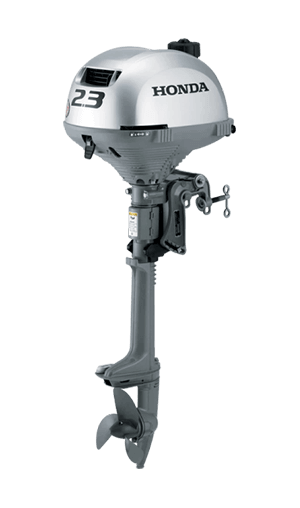
- Find a Dealer
CRUISE INTO SUMMER SAVINGS
Get up to $1000 off select Honda outboards, now through July 7th, 2024.

Premium Power
Honda’s new BF350 V8 offers unparalleled performance and extraordinary power.
Endless Adventures
Powerful performance. Legendary reliability. Remarkable fuel efficiency. Make the most of your time on the water, with Honda Marine.
iST : Intelligent Shift and Throttle
Smart System. Masterful Control. Only from Honda.
Portable Power
Honda Portables are ready for adventures - big and small.

INTELLIGENT SHIFT AND THROTTLE
Only from Honda, iST puts the control where you want it.
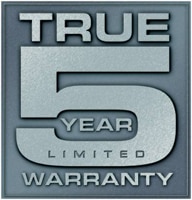
TRUE 5 WARRANTY
Our warranty is the best in the business. Just like you'd expect from Honda
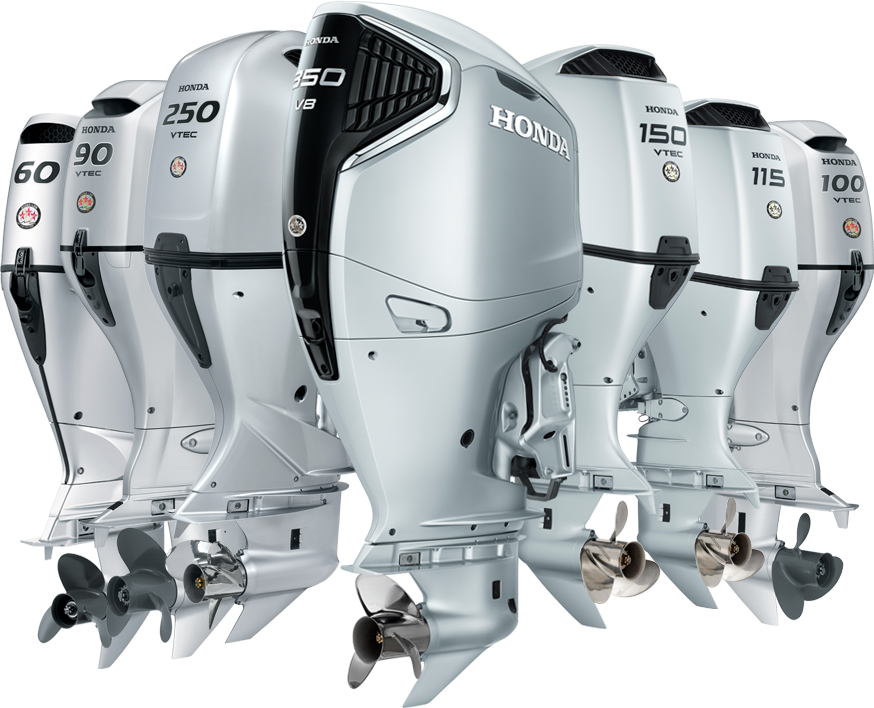
Financing as low as 4.99%
Ready to get out on the water? Honda’s low rates can help you get there.
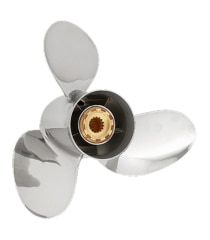
Find Your Prop
Honda’s prop selector tool can help you find the right prop for your outboard.
Outboard Motors
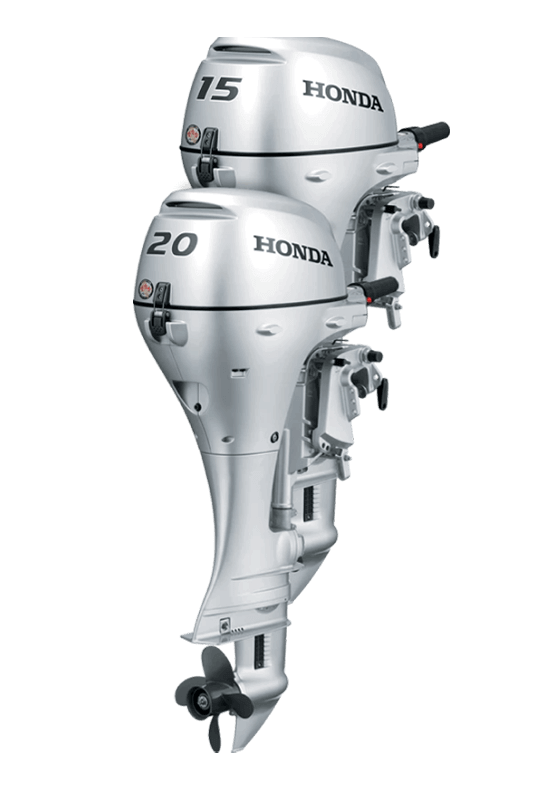
THE V8 YOU’VE BEEN WAITING FOR
Take the joy of boating to the next level with the new BF115 – 150 series.
Honda’s first production V8 engine provides extraordinary power, exceptional speed, and exhilarating acceleration – and all with best in class fuel economy and a comfortable, quiet ride. The BF350 is a landmark achievement that you’ll want to experience for yourself.
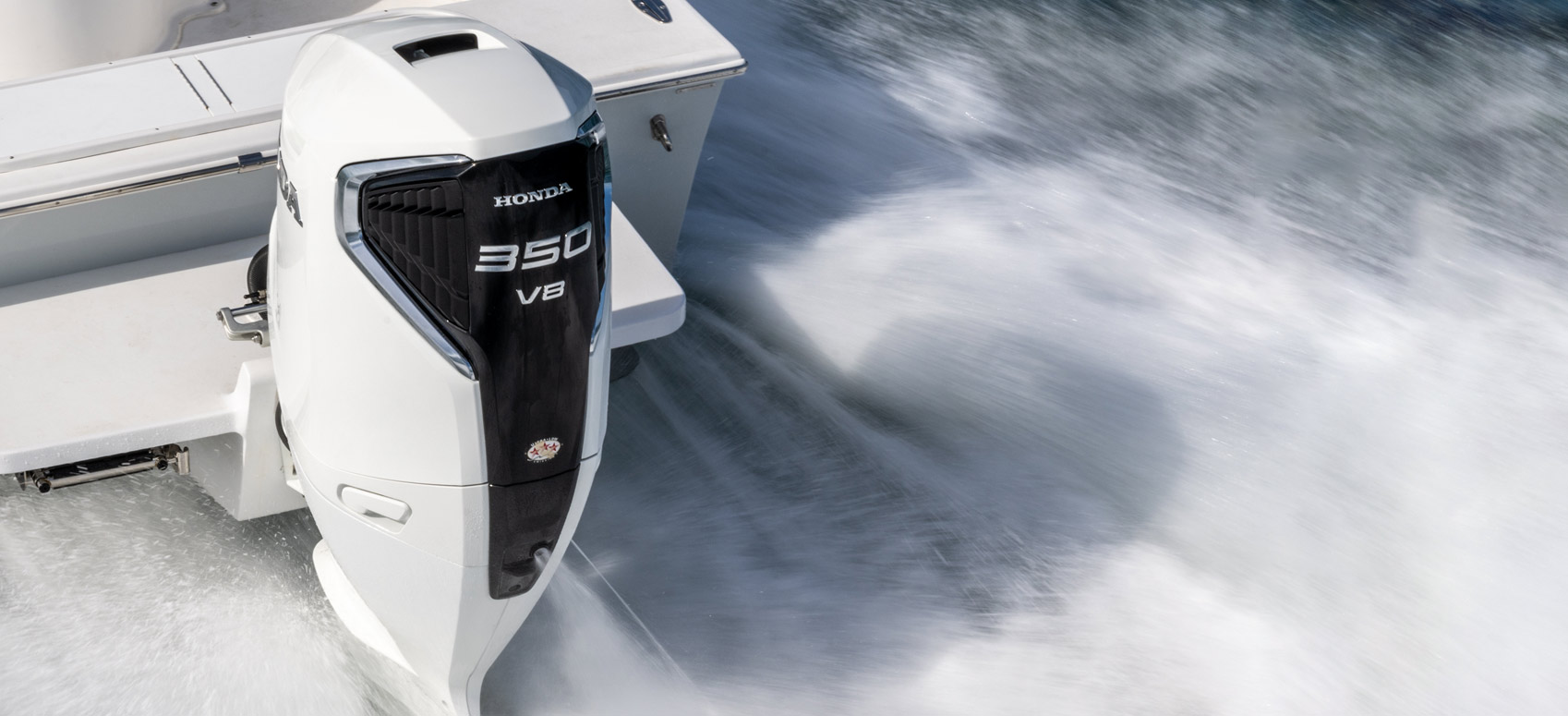
Intelligent Shift & Throttle
Honda’s Next Generation iST ® Experience: Smart System, Masterful Control. Available on Honda 115 – 350 hp outboards.
- Control of up to 4 engines and 2 control stations
- Effortless shift and throttle control
- Fine tuning of throttle settings at any speed
- Enhanced docking control
- Return to port capability
- Simple, easy to understand user interface
- One switch trim control on multi-engine installations
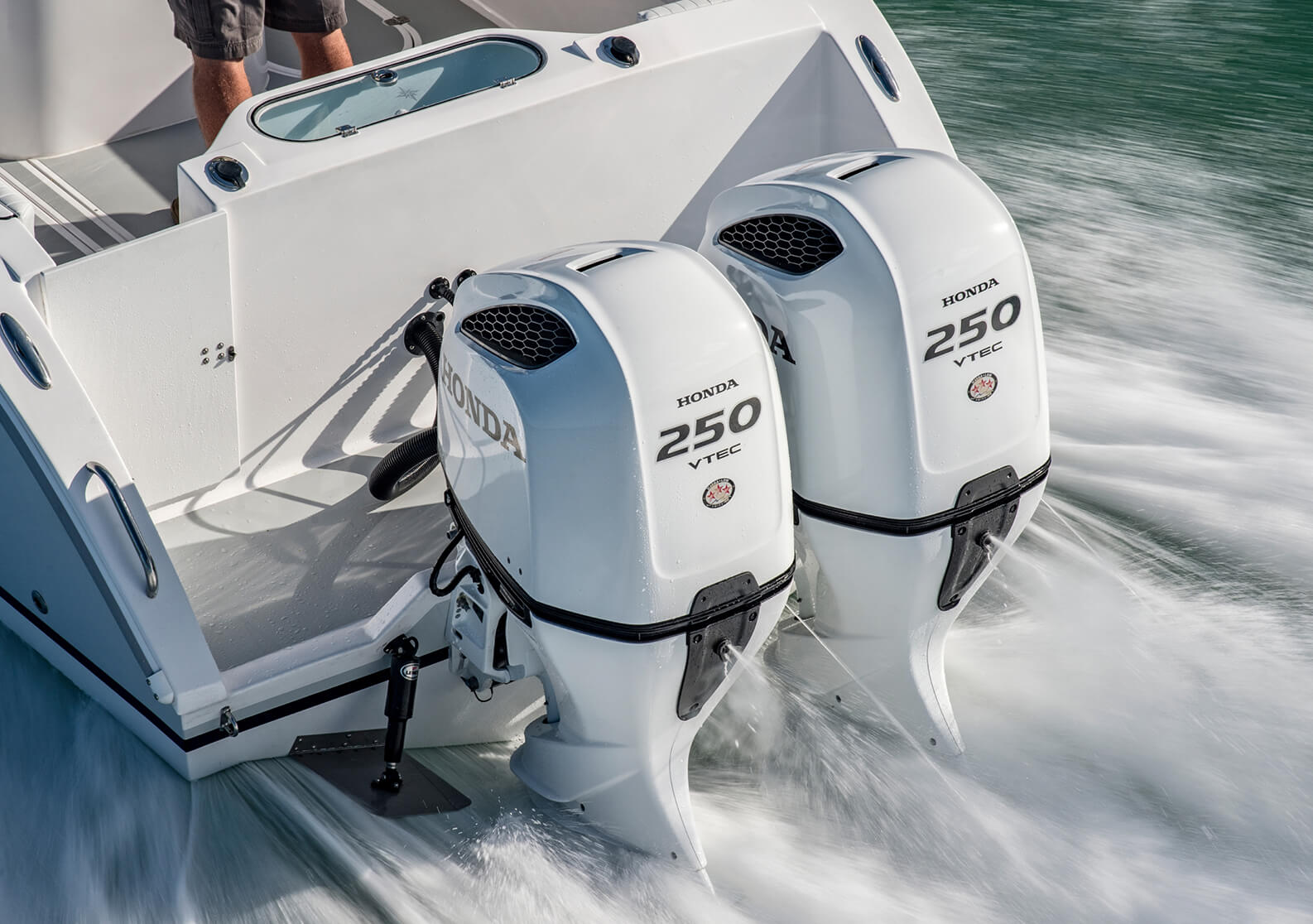
Honda Parts & Accessories
Oils and Chemicals. Parts. Developed specifically for your Honda Outboard.
Honda Marine offers a wide variety of accessories for our engines. From Controls and flush kits to gauge sets, harnesses and propellers, we have the parts and accessories you require.
You can order parts from any authorized Honda Marine dealer.
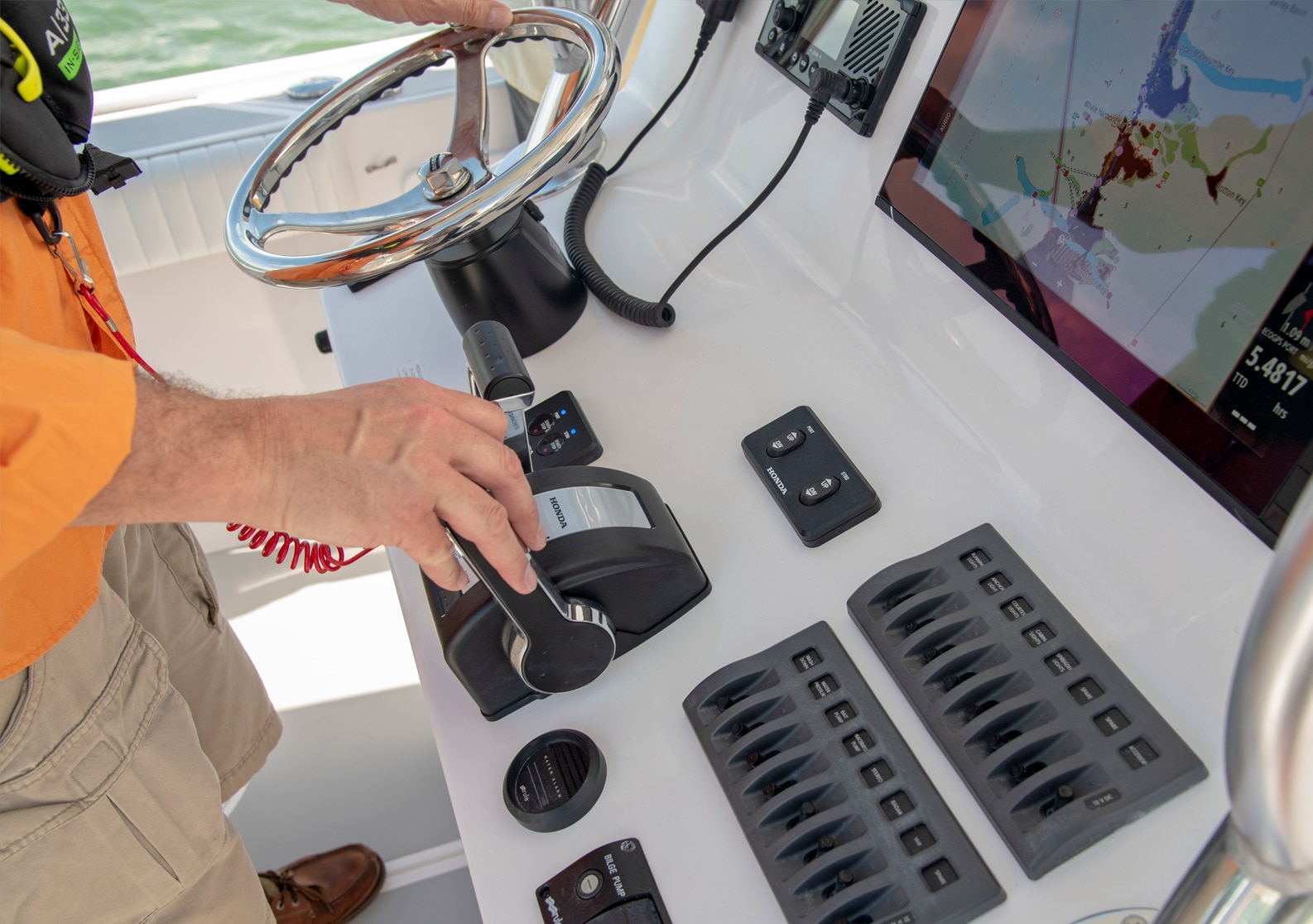
Best Boat Engine Brands

December 27, 2023

This article may contain affiliate links where we earn a commission from qualifying purchases.
Key Takeaways
- Technology advancements have led to improved efficiency in outboard motor brands.
- Top manufacturers like Evinrude, Yamaha, and Suzuki cater to different boating needs.
- Evaluating each brand helps in selecting the ideal engine for the boating experience.
Embarking on a journey to find the top boat engine brands? Navigate the waters of quality and performance as we unveil the leaders in marine propulsion.
The best boat engine brands are Evinrude, Johnson, Honda, Mercury Marine, Tohatsu, Yamaha, and Suzuki. Each offers unparalleled reliability, efficiency, and cutting-edge technology, ensuring top performance for marine enthusiasts.
As a marine enthusiast, I've spent years navigating the seas, feeling every surge and swell. Choosing the right boat engine transforms your experience. I'm here to guide you through this sea of options. Together, we'll find an engine that matches your needs, ensuring smooth sailing and reliable performance.
Table of contents
best boat engine brands.
The right motor can significantly enhance your boating experience, as different brands offer varying features and power options. When it comes to selecting the best boat engine brand, factors such as fuel economy, performance, and ease of maintenance are essential considerations.
Engine technology has advanced significantly over the years, with manufacturers creating both two-stroke and four-stroke engines that cater to boating needs. Assessing individual manufacturers' features, performance ratings, and customer satisfaction helps in choosing the right electric outboard motor brand to suit your boating expertise and needs.
Here’s a table comparing the best boat engine brands:
1. Evinrude Outboards

The Evinrude outboards are renowned for their performance, reliability, and innovative technology. They have both two-stroke and four-stroke engines, which cater to various boating needs.
Specifications
Performance.
Evinrude outboard motors are known for their top-tier performance. They have powerful engines, such as V6 and V8, which provide excellent acceleration and torque. With Evinrude's innovative two-stroke E-TEC G2, you can achieve increased fuel efficiency and superb responsiveness to meet your boating needs, whether it's water sports or aluminum fishing.
What Sets It Apart
- Two-stroke versus Four-stroke debate: Evinrude's best outboard motor engines offer all the benefits of both two-stroke and four-stroke engines with their E-TEC G2 technology.
- Technology and Durability: Evinrude's outboard engines are known for their advanced technologies, like the E-TEC G2, and their impressive durability.
- Reliability: Evinrude is a well-established outboard brand with an extensive dealer network, giving you peace of mind when it comes to service and repairs.
Recent Updates
Due to the challenges presented by COVID-19, BRP discontinued Evinrude outboard updates in 2020. This decision allows the company to focus on expanding its existing boat business, including innovating beyond the best outboard motor market.
- Evinrude outboard engines are known for their enhanced fuel efficiency
- Evinrude's E-TEC G2 engines are environmentally friendly, with fewer emissions
- It may be challenging to find a dealership with new inventory or replacement parts.
- Evinrude’s reliable outboard motors tend to be on the pricier side
Who Should Buy It
Evinrude outboard motors can be ideal for boaters who prioritize performance, fuel economy, and environmental responsibility. These engines are suitable for a wide range of boating activities, from water sports to fishing and beyond. If you're searching for a reliable outboard engine, Evinrude is a strong contender.
Where To Buy It
While production of Evinrude outboard motors has been discontinued, you can still find these engines through authorized dealers and online platforms, such as Boat Trader .
2. Johnson Outboards
Johnson Outboards has always been known for its performance in both speed and fuel economy.
The V6 engines provide excellent power output while maintaining efficient fuel usage. This makes Johnson a popular choice among boaters who prioritize speed and acceleration for water sports and fishing.
Johnson Outboards' distinguishing factor remains in their focus on simple, reliable designs. The 2-stroke engine technology provides quick acceleration and high output from a lightweight package, making it ideal for smaller boats and aluminum fishing vessels. Even after discontinuation, the robust design continues to be favored by many boaters.
Due to financial strains and strategic decisions following the COVID-19 pandemic, Johnson Outboards was discontinued. Nonetheless, their engines remain popular in the used market and continue to be supported by various aftermarket services and dealerships.
- Lightweight and compact design
- Quick acceleration
- Fuel-efficient V6 Engines
- Direct fuel injection technology for improved efficiency
- High performance in various boat applications
- Discontinued, making new stock availability limited.
- Older 2-stroke engines may have emissions concerns.
- Limited access to the original Johnson parts and service network.
Johnson Outboards can be perfect for boaters who appreciate a reliable, high-performance engine for their water sport and fishing needs. Additionally, the affordable prices on the used market make it an excellent option for those who want to maximize their boating experience without breaking the bank.
Although Johnson Outboards manufacturing was discontinued, you can still find these outboard motors in good condition on used boat marketplaces and through dealer networks . Additionally, many aftermarket parts and service providers can help you maintain and service your Johnson outboard to ensure its longevity and optimal performance.
3. Honda Outboards

Honda is a well-known specific brand in the outboard motor market, offering reliable and technologically advanced products.
Honda offers a range of outboard motors that cater to various boating needs. Some popular Honda outboards include
Honda's outboard motors are renowned for their performance, efficiency, and reliability. These engines are designed to offer optimal fuel economy, with innovative features like battery-less EFI, which simplifies the fuel system and enhances overall performance. With Honda’s lower unit design, you can expect minimal ethanol problems and improved fuel efficiency, making your boating experience enjoyable and cost-effective.
What sets Honda's outboard motors apart from other outboard motor brands is its focus on utilizing technological advancements to ensure durability, reliability, and performance. By incorporating industry-leading features such as the battery-less EFI and progressive fuel injection, Honda outboard engines stand out from the crowd.
The commitment to quality service and maintaining long-lasting relationships with customers further reassures boaters of their investment in a Honda outboard motor.
Despite facing challenges brought on by the COVID-19 pandemic, Honda Marine has continued to roll out new technology and features for their outboards. For instance, the Honda 105 Jet is a recent addition to their lineup, providing boaters with a reliable four-stroke engine that offers excellent fuel economy and superior performance.
- Technologically advanced features
- Efficient fuel consumption
- Reliable and durable engines
- Excellent horsepower range
- Solid dealer network and support
- Limited options in certain horsepower ranges
- Higher initial cost compared to some competitors
Honda outboards can be excellent for those who prioritize reliability, fuel efficiency, and advanced technology. They're suitable for a wide range of boating activities, including fishing boats and water sports.
You can buy Honda outboard motors from their official website or through their vast dealer network. Check out the Honda Marine site to locate an authorized dealer near you.
4. Mercury Marine Outboards

In this section, we will discuss Mercury Marine Outboards , one of the best outboard motor brands known for its reliable and high-performing engines.
Mercury's outboard motors offer excellent performance and power for various boating activities, such as fishing, freshwater, and pontoon boating. These engines are known for their reliability, fuel efficiency, and smoothness. The Verado series, Pro XS models, and SeaPro 500hp are specifically designed for high-performance and heavy-duty applications.
Mercury Marine sets itself apart from other outboard motor brands with its innovative technologies, such as:
- Adaptive Speed Control : Maintains engine speed regardless of load or condition changes
- Joystick Steering: Provides smooth, intuitive control over the boat
- Electric Start: Offers quick and easy starting
Despite facing challenges due to the COVID-19 pandemic, Mercury Outboards continues to invest in technology and expand its product offerings. The release of the Verado 600hp V12 was a significant milestone that demonstrated Mercury's dedication to innovation and performance enhancements.
- Wide range of models to suit different boating requirements
- Fuel-efficient engines
- High-performance and reliable Mercury Outboard Mrotors
- Network of authorized dealers for sales, service, and support
- Warranty coverage for peace of mind
- Higher initial cost compared to some other brands
- Requires maintenance to prevent fuel system and ethanol-related issues
- Limited availability of some engine models
If you prioritize power, performance, reliability, and innovative technology in an outboard motor, Mercury Marine is a great choice. This brand is especially suited for those looking for high-performance engines for fishing, pontoon, or freshwater boats.
You can purchase Mercury outboards through their official site or authorized dealer network .
Whether you are a seasoned boater or a newcomer, Mercury Marine outboard motors won't disappoint.
5. Tohatsu Outboards

Tohatsu is a reputable brand in the outboard motor industry, known for its high-quality outboard motors since 1956.
- High power output: Tohatsu motors are designed to deliver exceptional performance, meeting the power demands of both small fishing boats and larger vessels.
- Fuel efficiency: With a focus on fuel efficiency, Tohatsu outboards offer significant savings on operating costs.
- Durability: With reliable four-stroke technology, Tohatsu outboards are built for durability, ensuring a longer lifespan and low maintenance.
Tohatsu's focus on fuel economy and advanced four-stroke technology creates a balance of performance, efficiency, and reliability that separates them from competitors such as Yamaha and Suzuki. Despite the challenges posed by COVID-19, Tohatsu has continued to refine its engine technology, leading to improved effectiveness and durability.
Tohatsu has recently launched a new line of outboard motors featuring updated technology to further enhance their performance, reliability, and fuel efficiency. This new line includes powerful and compact models suitable for various boating experiences.
- Wide range of models catering to different boating needs
- Advanced four-stroke technology for a smooth and efficient performance
- Improved fuel economy for cost-effective operation
- Durable and reliable, ensuring a longer lifespan with low maintenance
- Limited dealership network, potentially affecting service and repairs
- It may not be the most popular choice among boaters compared to brands
Tohatsu outboard motors can be ideal for those seeking a reliable engine with impressive power output, fuel efficiency, and affordable operating costs. If you require a four-stroke engine for your fishing boat or need a solid motor that delivers optimal performance but doesn't break the bank, Tohatsu might be the right choice for you.
You can find Tohatsu outboard motors on their official website . Make sure to purchase through an authorized dealer to ensure you receive a genuine product backed by Tohatsu's quality guarantee.
6. Yamaha Outboard

Yamaha is a well-known and highly respected brand in the boating world. Their outboard motors offer reliable performance, fuel efficiency, and cutting-edge technology for various boating needs.
Yamaha offers many outboard models to cater to various boating needs, such as the Yamaha F25, the Yamaha F250, and the Yamaha V-MAX SHO 115. Here is a brief overview of these models:
Yamaha outboards are known for their exceptional performance. They deliver excellent fuel economy by utilizing superior technology and design. The Yamaha V-MAX SHO 115, for example, is known for its top-end performance, which is perfect for fishing boats and water sports enthusiasts.
High-quality engineering and technology back Yamaha outboard motors. They undergo tough testing to ensure durability and long-lasting performance. Yamaha's focus on technological advancements contributes to achieving better fuel efficiency and power output, such as in their V6 series.
Yamaha continues to update its outboard engine lineup regularly. Their dedication to innovation helps them maintain a strong presence in the market, even during challenging times like the COVID-19 pandemic.
- Reliable performance that caters to a variety of boating needs
- Cutting-edge technology for better fuel efficiency and power
- Excellent dealer and service network for support
- Yamaha outboard motors can be pricier than some other brands
- Limited availability on certain models due to high demand
If you value reliability and performance, Yamaha outboard motors are perfect. Whether you're into fishing, water sports, or casual boating, Yamaha's extensive lineup offers something for everyone.
You can purchase Yamaha outboard motors from their official website . It is important to ensure proper installation and service when buying an outboard motor, so visiting a local dealer with a comprehensive service offering is recommended.
7. Suzuki Outboard
Suzuki is a renowned name in outboard motors, known for its reliability and advanced features. Catering to a wide range of boating needs, Suzuki outboards offer impressive power, performance, and fuel efficiency.
Suzuki outboards are known for their excellent performance on the water. They deliver smooth and responsive power, making them suitable for various types of boating activities, including fishing and cruising. The advanced fuel injection system (or EFI system) allows for precise fuel delivery and excellent efficiency, while the lower unit enhances the boat's overall handling.
The Suzuki Dual Prop System is one feature that sets the Suzuki outboard apart from other outboard motor brands. This innovative system utilizes two sets of propellers that counter-rotate, leading to increased performance, better fuel economy, and a smoother boating experience.
Additionally, Suzuki's Lean Burn Control Technology further improves fuel efficiency across their entire lineup, making these motors ideal for boaters who prioritize eco-friendly options.
Suzuki has continued to innovate and adapt to the changing industry. Even amidst the COVID-19 pandemic, they managed to release new models like the DF115BG and DF140BG, featuring enhanced features and performance. These outboards showcase the company's commitment to continuously improve its products and stay on top of technological advancements.
- A broad range of engine options
- Advanced technology like Dual Prop System and Lean Burn Control
- Reliable and efficient performance
- Suitable for different types of boats and activities
- Excellent fuel economy
- Limited dealer network in some areas
- Price can be higher compared to other brands
If you're in the market for a reliable outboard motor that offers advanced features, excellent fuel efficiency, and smooth performance, Suzuki is an excellent choice. Their motors cater to various boating needs and come in a diverse range of horsepower options. Whether you own a small fishing boat or a high-performance vessel, Suzuki outboards provide the power, reliability, and efficiency that you need.
Suzuki has an extensive dealer network across the globe, making it easy to find the perfect outboard motor for your boat. To locate the nearest authorized Suzuki dealer, simply visit the Suzuki Marine website and enter your location.
Engine Maintenance and Durability Analysis
Analyzing engine maintenance and durability reveals the pivotal role of consistent care and brand-specific guidelines in ensuring the long-term performance and reliability of boat engines.
Understanding Maintenance Requirements
Different boat engine brands require specific maintenance routines. Four-stroke engines often need frequent oil changes, whereas two-stroke engines demand regular fuel system checks. Adherence to each brand's maintenance guidelines is crucial for optimal performance and longevity.
Longevity and Reliability Across Top Brands
Each boat engine brand has a unique reputation for longevity and reliability. For instance, Mercury Marine and Honda are known for durable engines. However, longevity also depends on maintenance quality and operational conditions, such as exposure to saltwater.
Tips for Prolonging Engine Life
Proper care is essential for prolonging engine life. Regular cleaning, especially post saltwater use, timely part replacements, and annual professional check-ups are key practices. Winterizing the engine in colder climates also helps in maintaining its condition and ensuring long-term reliability.

Is A Ferry A Type Of Boat? (Everything You Need To Know)

What Is The Gunwale On A Boat?

What's The Fastest Boat That Has Crossed the Atlantic Ocean?

Is Motion Sickness Worse In The Front Or Back Of A Boat?
About THE AUTHOR
Brian Samson
I have a deep love of houseboating and the life-changing experiences houseboating has brought into my life. I’ve been going to Lake Powell on our family’s houseboat for over 30 years and have made many great memories, first as a child and now as a parent. My family has a passion for helping others have similar fun, safe experiences on their houseboat.
Trending Now

The Best Boat Safety Gear for Every Zodiac Sign

People Who Are Good At Capturing Stunning Lake Photos Always Use These Accessories
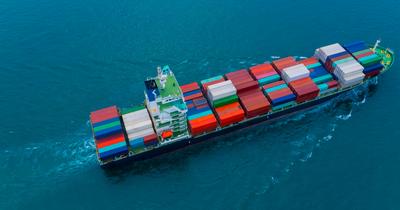
How Fast Does A Shipping Boat Go?

Mastering Boat Steering Techniques: From Rudder to Tiller
After spending over 30 years on houseboats, the memories and knowledge we've gained will never fade. Learn from our experiences here on LakeWizard. You can read more about us and our team, here .
©2024 LakeWizard. All rights reserved.
You can email us at [email protected]
LakeWizard.com is a participant in the Amazon Services LLC Associates Program, an affiliate advertising program designed to provide a means for sites to earn advertising fees by advertising and linking to Amazon. This site also participates in other affiliate programs including but not limited to ShareASale, CJ, and ClickBank, and is compensated for referring traffic and business to these companies.
- Wishlist (0)

- Login/Register
- Manufacturers
- Exhaust Kits
- Gasket Kits
- Water Pumps
- Water Pump Service Kits
- Impellers & Service Kits
- Thermostats & Kits
- Thermostat Housing
- Thermostat Gaskets
- Inboard Alternators
- Outboard Alternators
- Alternator Brackets and Belts
- Inboard Starters
- Outboard Starters
- Inboard Ignition
- Outboard Ignition
- Exhaust Manifolds
- Exhaust Risers
- Complete Exhaust Manifold + Riser Kits
- Exhaust System Gaskets and Spacers
- Exhaust System Elbows and Plugs
- Fuel Filters & Separators
- Fuel Regulators
- Fuel Pump Service Kits
- Engine Warranty
- 3.0L 181ci 4cyl
- 5.3L 325ci DI V8
- 5.7L 350ci V8
- 6.2L 376ci DI V8
- 6.2L 376ci DI LT4
- 7.4L 454ci V8
- All Engines
- Marine Base Engines
Complete Marine Engines
- Engine Mounts
- Harmonic Balancers
- Power Steering Parts
- Pulleys and Belts
- Timing Covers
- Flywheels, Couplers and Damper Plates
- Valve Covers
- Weather Covers
- Heat Exchangers
- Oil/Gear Coolers
- Hoses and Clamps
- Tilt Trim Motors & Pumps
- Distributors, Caps, & Rotors
- Service & Diagnostic Tools
- Displays and Gauges
- Senders and Sensors
- Spark Plugs & Wires
- Wire Harnesses & Electrical System
- Exhaust Outlets and Bellows
- Catalyst Exhaust Parts
- Carburetors
- Carburetor Repair Kits
- Flame Arrestors
- Fuel Injectors
- Intake Manifolds
- Throttle Body
- Dipsticks and Fittings
- Oil Lines, Adapters, & Filters
- Velvet Drive
- Sterndrive Couplers
- Gearcase Parts
- Tilt & Trim Parts
- Transom Parts
- Key and Ignition Switches
- Seating & Accessories
- Ice Chests & Coolers
- Electronics & Accessories
- Life Jackets and Vests
- Marine Audio and Speakers
- Trolling Motors
- Jet Pump Impellers
- Mixed/Axial Pump Parts
- Jet Pump Intake Grates
- Jet Pump Drivelines & Adapters
- Outboard Fuel Systems
- Outboard Cooling Systems
- Outboard Electrical Systems
- Lower Units
- Lehr Outboards
- Marine Engines /

New 5.3L DI JetPac Engine

New 5.3L DI JetPac Engine with Catalyst Exhaust

New 5.3L DI Sterndrive EnPac Engine

New 5.3L DI V8 Sportpac with Catalyst Exhaust

New 5.3L V8 DI SportPac Engine

New 5.7L Complete Inboard SportPac Engine
- Complete Engine
- Mercruiser/OMC/Volvo Replacement
- Marine Power
- United Ignition Products
- Shipping Information
- Privacy Notice
- Conditions of Use
- Return Policy
- Customer info
- Shopping cart
- Compare products list
- 17506 Marine Power Industrial Park Ponchatoula, LA 70454
- [email protected]
- 985-386-2081

Our Commitment
Whatever it takes. That sums up our commitment to our customers and what we’re willing to do. From new product solutions, worldwide dealer support, sponsorships, and an online retail service, we continue to fine-tune our service approach to supply what you need.
Innovative Engineering
Our reputation as innovators in the marine industry comes from years of research, development, and manufacturing. Our in-house machine shop allows for constant development and our unique relationship with GM puts more muscle behind our innovation.
State of the Art Technology
In an industry that is constantly evolving, staying at the forefront of technology advancement is key. At Marine Power we are continuously developing our products and solutions to take advantage of the newest technology, from Bluetooth connectivity to the latest ECM controllers.
Worldwide Tools
We hold the tools, talent, and technology to support dealers worldwide. Our force comes from tremendous support throughout the world, with an extended reach to over 8,000 dealers. It’s easy to see why Marine Power can deliver.
Find Your New Engine Today
Whether you are in need of a replacement engine or just looking to add more power to your boat, Marine Power has got you covered with our line of longblock, partial, and complete engine packages.
- Enjoy peace of mind on the water knowing you're covered by our comprehensive engine warranty program
- Optimize performance with increased power and fuel efficiency for any marine application
- Take advantage of worldwide dealer support providing you maximum serviceability
A Perfect Match
From airboats to jetboats and everything in between, Marine Power has the engine to fit your application.

Dealers & Distributors
Support network.
We are focused on building and maintaining a large support network of dealers and distributors worldwide.
ENGINE CONFIGURATIONS
Base engine.
Authentic GM Marine longblock engines manufactured on GM production lines strictly for marine use. Available in both standard and counter rotation, Serves as the base for all Marine Power engines.
The ParPac is a partial engine package. Built using an authentic GM base engine and includes an intake, carburetor, electric fuel pump, and ignition system,
The SportPac is a Complete Inboard engine package. Ideal for a full re-power of the weekend cruiser or family ski boat. Compatible with state of the art MEFI 6 fuel injection to increase performance and fuel consumption.
The EnPac is a Complete Sterndrive engine package. The perfect drop-in solution for replacing your Mercruiser, OMC, and Volvo sterndrive engines. Compatible with state of the art MEFI 6 fuel injection to increase performance and fuel consumption.
The AirPac is a supercharged Air Boat engine. Consider this your go-to small block engine. Super doesn’t begin to cover the power this engine is packing. High-flow cylinder head design with Swirl-Wing technology induces combustion chamber swirl.
The JetPac is a Complete Jet Boat engine package. The JetPac comes equipped with fuel injection and makes the perfect repower or upgrade for your jet boat applications.
ENGINE APPLICATIONS
Delivering performance, replacement engines.
From longblock to complete sport performance engines.
DELIVERING POWER
Jet engines & pumps.
Solutions for your most demanding jet boat requirements.
DELIVERING INNOVATION
Airboat engines.
Introducing the LS family of fuel economy airboat engines .
Our Dealers
View our dealer locations around the world and find contact details for your nearest dealer.
Drop us a line
You can contact us by filling in this form any time you need professional support.
Learn more about us and find resources that will help you with all of our products
- Undergraduate
- Postdoctoral Programs
- Future Engineers
- Professional Education
- Open Access
- Global Experiences
- Student Activities
- Leadership Development
- Graduate Student Fellowships
- Aeronautics and Astronautics
- Biological Engineering
- Chemical Engineering
- Civil and Environmental Engineering
- Electrical Engineering and Computer Science
- Institute for Medical Engineering and Science
- Materials Science and Engineering
- Mechanical Engineering
- Nuclear Science and Engineering
- Industry Collaborations
- Engineering in Action
- In The News
- Video Features
- Newsletter: The Infinite
- Ask an Engineer
- Facts and Figures
- Diversity, Equity & Inclusion
- Staff Spotlights
- Commencement 2023
Ask An Engineer

Related Questions
- Is it possible to make solar-powered airplanes?
- How does an airplane stop on a runway after landing?
- Why does traffic bottleneck on freeways for no apparent reason?
- Will public transportation ever replace the automobile?
- How do the blades of a jet engine start turning?
- Will cars ever be able to drive themselves?
- Why hasn’t commercial air travel gotten any faster since the 1960s?
- Can I start my car with a voice command?
- How can a person ride a motorcycle 100 mph but not stand up in a 100 mph wind?
- What are the future propulsion systems for interplanetary travel?
What’s the difference between a motor and an engine?
As with almost any word, it all depends how far you go back in time for your definition…
As technologies and devices evolve, language must stay on its toes if we expect to understand each other when we talk about them. English-speakers are particularly flexible at adapting to progress. They’re willing to coin new terms, modify old meanings, and allow words that are no longer useful to pass from common usage. “The etymologies of ‘motor’ and ‘engine’ reflect the way language evolves to represent what’s happening in the world,” says MIT literature professor Mary Fuller.
The Oxford English Dictionary defines “motor” as a machine that supplies motive power for a vehicle or other device with moving parts. Similarly, it tells us that an engine is a machine with moving parts that converts power into motion. “We use the words interchangeably now,” says Fuller. “But originally, they meant very different things.”
“Motor” is rooted in the Classical Latin movere , “to move.” It first referred to propulsive force, and later, to the person or device that moved something or caused movement. “As the word came through French into English, it was used in the sense of ‘initiator,’” says Fuller. “A person could be the motor of a plot or a political organization.” By the end of the 19th century, the Second Industrial Revolution had dotted the landscape with steel mills and factories, steamships and railways, and a new word was needed for the mechanisms that powered them. Rooted in the concept of motion, “motor” was the logical choice, and by 1899, it had entered the vernacular as the word for Duryea and Olds’ newfangled horseless carriages.
“Engine” is from the Latin ingenium : character, mental powers, talent, intellect, or cleverness. In its journey through French and into English, the word came to mean ingenuity, contrivance, and trick or malice. “In the 15th century, it also referred to a physical device: an instrument of torture, an apparatus for catching game, a net, trap, or decoy,” says Fuller.
In the early 19th century, the meanings of motor and engine had already begun to converge, both referring to a mechanism providing propulsive force. “The first recorded use of ‘engine’ to mean an electrical machine driven by a petroleum motor occurs in 1853,” says Fuller.
Today, the words are virtually synonymous. “Language evolves to take on new tasks,” she explains. “Without thinking about it, we adapt to new meanings and leave the old behind.” We talk about our computer’s dashboard, unaware that in the 1840s, the word referred to the board at the front of a carriage that stopped mud from being splashed on the coachman. Similarly, the term “search engine” harks back to the older meaning of “engine” as a contrivance, suggests Fuller. First used in 1984 to mean “a piece of hardware or software,” the phrase may have been informed by Charles Babbage’s 1822 use of “engine” to mean a calculating machine.
The related word “engineer” was first used in 1380 to describe the constructor of military engines like siege works and catapults, and by the early 18th century, referred specifically to the maker of engines and machines. The OED lists a second definition of “engineer” as well. “It is synonymous with the older usage meaning ‘artifice,’” says Fuller. “An engineer is an author or designer of something, a person who contrives a plot, a schemer.” A definition one can only hope will soon pass from common usage.
Thanks to Jessie Steffen of Hutchinson, Kansas, for this question.
Posted: February 23, 2013

Auto Overload
Motor Oils To Avoid And Alternatives To Buy: Your Engine Will Thank You
Posted: April 24, 2024 | Last updated: April 24, 2024
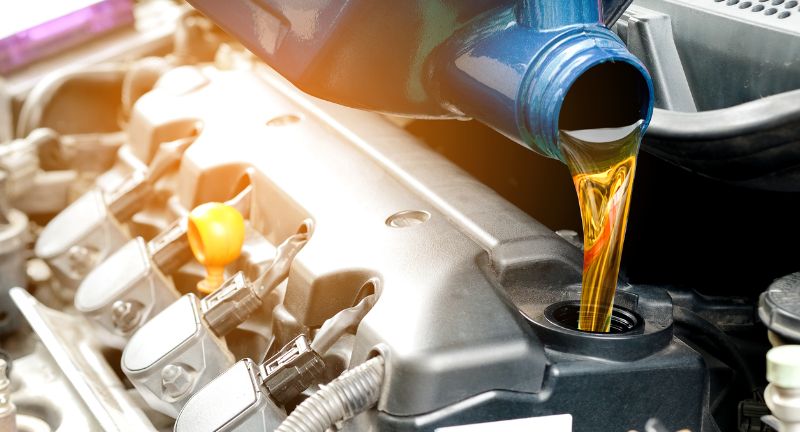
Choosing the right motor oil is crucial for the optimal performance and longevity of your engine. The wrong motor oil can lead to a range of issues, including insufficient lubrication, increased friction, and potential long-term damage. To avoid these problems, it’s essential to make informed decisions about the type and quality of motor oil used in your vehicle.
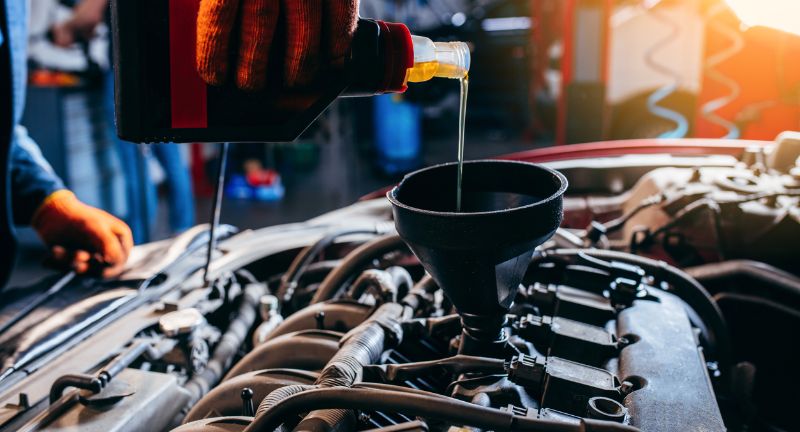
Avoid: Liberty Motor Oil
Liberty Motor Oil falls short in delivering quality with low viscosity, insufficient additives, and a higher volatility rate, leading to poor long-term performance. The brand’s claims on viscosity levels and product quality do not align with the actual results.
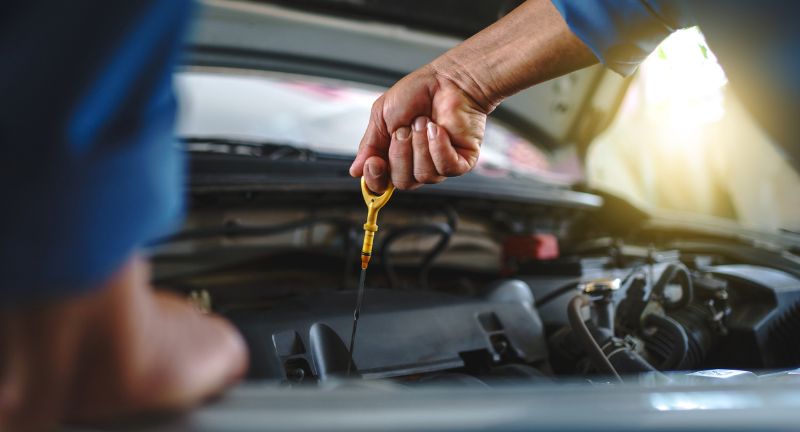
Avoid: Quaker State Q
Quaker State Q, despite its high price tag, lacks quality, essential additives, and falls short in meeting lubrication requirements. False claims about multi-viscosity and high volatility make it a brand to avoid for those seeking optimal engine performance.
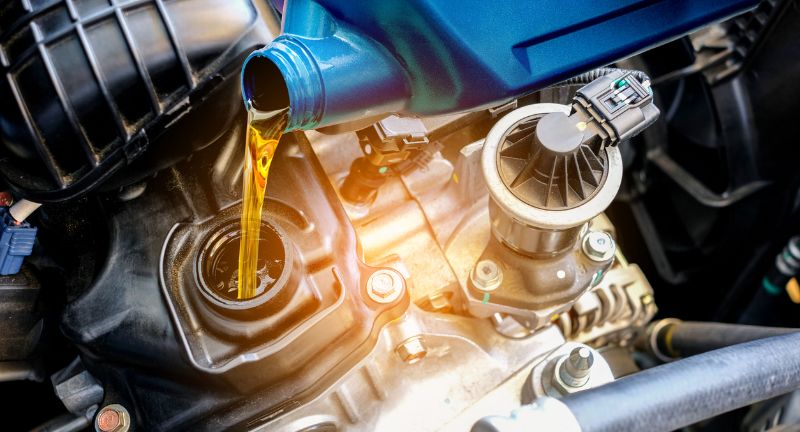
Avoid: Petrol Motor Oil
Petrol Motor Oil misleads consumers with inaccurate viscosity levels, fake SAE specifications, and poor environmental performance, leading to increased fuel consumption. The brand fails to keep up with market standards, making it an unwise choice, especially for newer vehicle models.
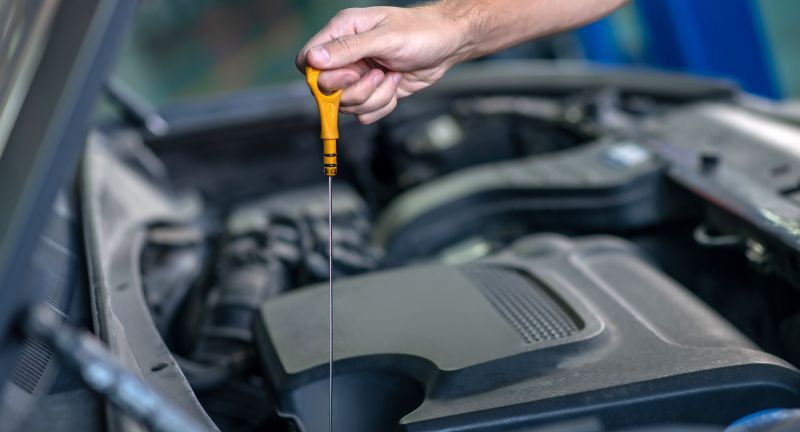
Avoid: Xpress Lube Pro
Xpress Lube Pro’s improper SAE grading and inclusion of non-essential impurities result in poor oil quality. The brand’s failure to meet the needs of modern car models, coupled with fake labeling, makes it advisable to steer clear to avoid potential issues.
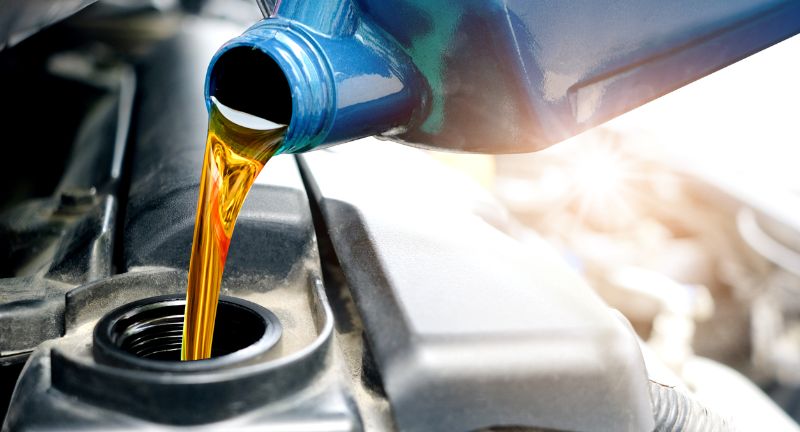
Avoid: Questron
Questron’s unassured viscosity grade, tendency to make the engine noisy, and insufficient lubrication highlight its shortcomings. The brand’s false labeling and inability to deliver average outcomes make it a less-than-ideal choice for consumers.
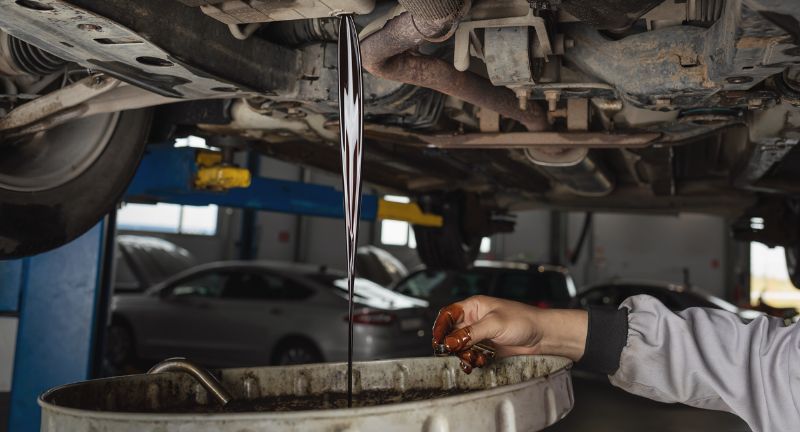
Avoid: Bullseye Motor Oil
Bullseye Motor Oil disappoints customers with its thin product, lack of essential additives, and poor lubrication. The brand’s stylish packaging doesn’t compensate for its low-quality oil, making it a brand to avoid for those seeking reliable engine performance.
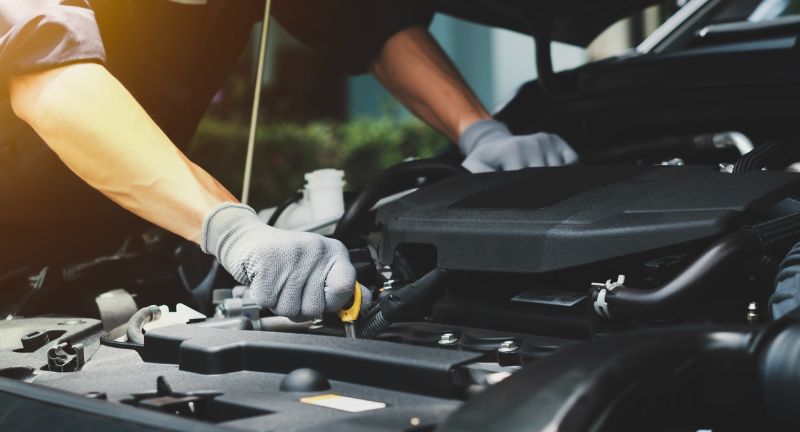
Avoid: Xcel Motor Oil
Xcel Motor Oil fails to meet the innovative requirements of modern vehicles, lacking in standard product quality. The brand’s poor viscosity index and absence of essential additives make it unsuitable for maintaining a smooth-running engine.
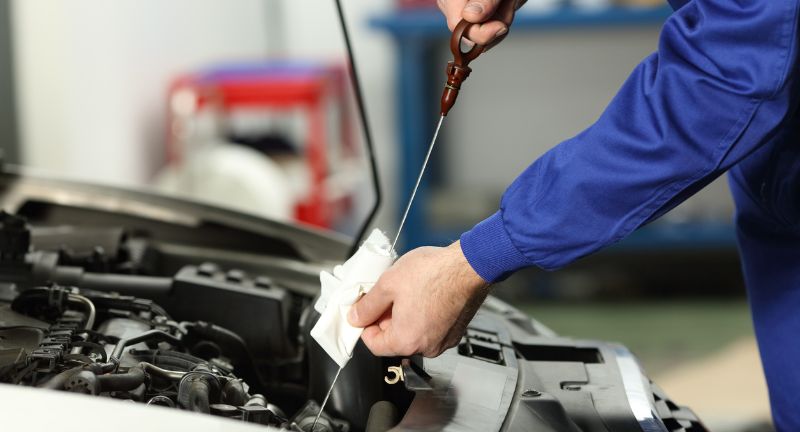
Avoid: Q10-40 Motor Oil
Q10-40 Motor Oil’s poor viscosity, lack of additives, and increased susceptibility to engine corrosion make it a subpar choice. The brand’s shortcomings in providing essential engine protection and quality place it among the worst engine oil options.
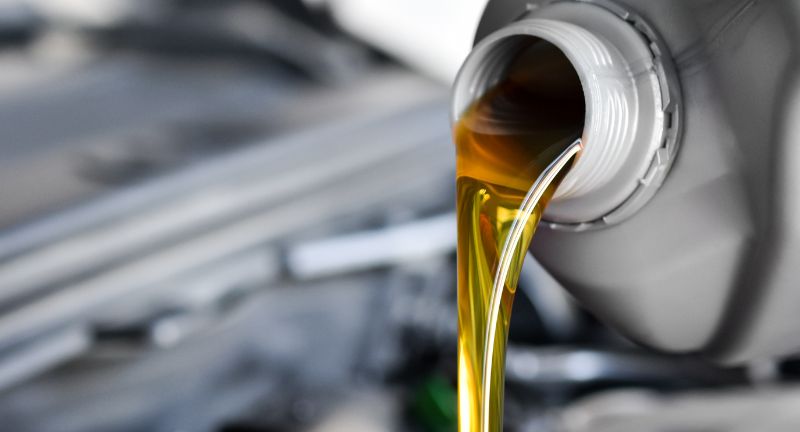
Buy: Castrol
Castrol stands out as one of the best motor oil brands, offering quality performance, environmental friendliness, high mileage, and excellent engine protection. Its diverse options and affordable price range make it a top choice for consumers seeking reliable motor oil.
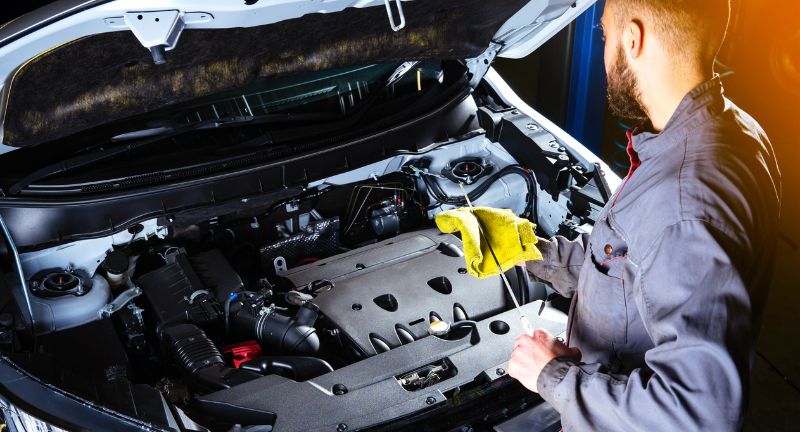
Mobil takes the lead as the best overall engine oil, endorsed by NASCAR and Chevrolet Performance. With a robust research and development department, Mobil offers innovative synthetic oils catering to various engine types, demonstrating consistent quality and performance.
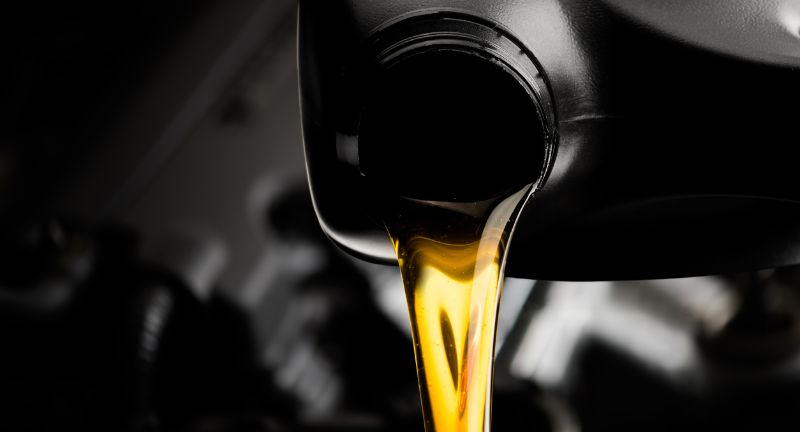
Buy: Pennzoil
Pennzoil’s extensive product range, commitment to quality, and performance in extreme temperatures position it as a reliable choice. The brand’s association with motorsports and dedication to customer satisfaction contribute to its positive reputation.
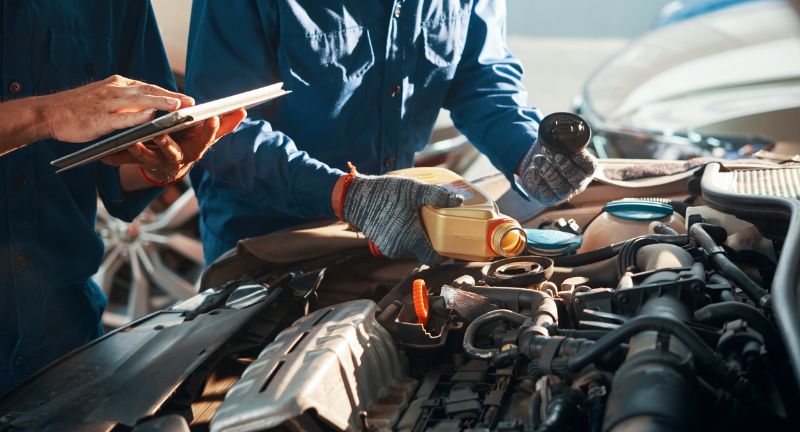
Buy: Valvoline
Valvoline, known as “The Original Motor Oil,” offers a range of options, including high mileage and synthetic blends, making it suitable for various engines. With a history of innovation and quality, Valvoline stands as a trusted brand in the motor oil industry.
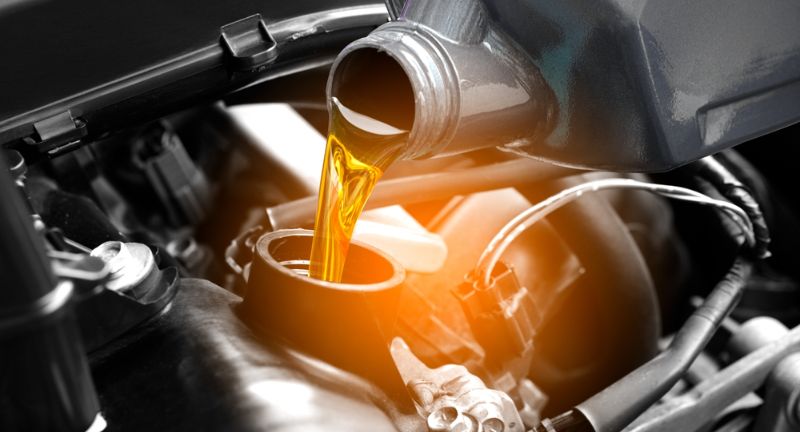
In conclusion, selecting the appropriate motor oil is paramount for maintaining a healthy and efficient engine. The comprehensive analysis of various motor oil brands, both to consider and avoid, provides valuable insights for consumers seeking optimal engine performance. By making informed choices based on the specific needs of the vehicle, drivers can ensure longevity, reduce wear and tear, and contribute to the overall well-being of their engines.
What To Read Next
- This Genius Trick Every Online Shopper Should Know
- Best High-Yield Savings Accounts This Month
- Best Gold IRA This Year
- Deals On Popular Cruises
- The Best Internet Deals For Seniors
- Affordable Life Insurance Options for Seniors
For the Latest Automotive News, Headlines & Videos, head to Auto Overload
More for You
Harvard psychologist shares 5 toxic things 'highly narcissistic' people always do in relationships
'10-foot-tall people' discovered by archaeologists in Nevada cave
17 Jobs That Pay $25 an Hour to Work From Home
Senate Republicans set to defy Trump over the filibuster
The most dangerous state to drive in in the US, according to data—plus, see where your state ranks
Should you leave your laptop plugged in all the time?
If you have a friend who uses any of these 8 toxic phrases, it may be time to 'move on': Psychologist
Want the Max $4,873 Social Security Benefit? Here's the Salary You Need.
Six easy ways to lose an inch from your waist – in a week
‘We’re in trouble’: Pollster reacts to his discussion with young voters
Carbine vs Rifle: What Exactly Is the Difference?
If You See Black Residue on Your Cast-Iron Skillet, This Is What It Means
"These guys don't have a lot to lose" - John Salley on why Anthony Davis lacks motivation vs. Nuggets
A woman was told she wasn't hired for a job because of her appearance. Career experts say it happens all the time.
Putin Ally Draws Red Line for 'Legitimate Targets' in NATO Country
What Is a Normal Amount of Time to Hold a Plank?
How many of these '80s one-hit wonders do you remember?
The 16 worst-paying college majors, five years after graduation
"GMA" Fans Congratulate Robin Roberts as She Announces Major Career Achievement
Termites Will Be A Thing Of The Past With One Item From Your Spice Cabinet
Ford's 1Q net income falls 24% as combustion engine unit sees sales and revenue decline
Ford Motor Co.’s first-quarter net income fell 24% from a year ago as the company’s combustion engine vehicle unit saw revenue and sales decline
DETROIT -- Ford Motor Co.'s first-quarter net income fell 24% from a year ago as the company's combustion engine vehicle unit saw revenue and sales decline.
The Dearborn, Michigan, automaker said Wednesday it made $1.33 billion from January through March, compared with $1.76 billion a year earlier.
Excluding one-time items, Ford made 49 cents per share, enough to beat analyst estimates of 43 cents, according to FactSet.
Revenue for the quarter was up 3.2% to $42.78 billion, but that fell short of Wall Street estimates of $42.93 billion.
Ford Blue, the combustion engine unit, made $905 million before taxes , down $1.7 billion from a year ago. Revenue was down 13%. The company blamed the declines on lower inventories and selection of F-150 pickups due to updating factories for a new model.
Chief Financial Officer John Lawler told reporters Wednesday that Ford will recover sales volume and selection later in the year, positioning the company for strong earnings.
Ford Pro, the commercial vehicle unit, offset some of the decline, posting pretax earnings of just over $3 billion, more than double the same period last year. Pro revenue was up 36%.
“We’re very profitable now, but we believe that this business will be profitable and durable for many years to come,” CEO Jim Farley said of the commercial unit.
But Model e, the electric vehicle business, lost $1.3 billion, almost $600 million more than the first quarter of last year. The company said it's cutting costs, but those have been erased by electric vehicle price declines across the industry.
Farley said the EV business is the “main drag” on Ford’s performance right now. But he pledged further cost cuts, and profits on the next generation of electric vehicles coming out in the next two to three years. A small team at the company is working on underpinnings for smaller more affordable EVs, the company said.
“We're going to build a sustainably profitable EV business," Farley said. "And it needs to return the cost of capital on its own and not be subsidized.”
The company held its full-year pretax earnings forecast at $10 billion to $12 billion, but Lawler predicted it would be toward the high end of the range.
It lowered an estimate of full-year capital spending to $8 billion to $9 billion, down from earlier guidance of $8 billion to $9.5 billion. The company said the reduced spending shows its commitment to using capital efficiently.
Lawler said Ford expects U.S. auto prices to fall 2% to 3% this year, but said that drop didn’t materialize in the first quarter. Prices, he said, held up across the industry.
Still, Ford expects the price drop to happen later in the year.
“So far, the consumer stayed relative strong, industry has remained strong,” he said.
Shares of Ford rose 3% in trading after Wednesday's closing bell.
Top Stories

In Trump hearing, SCOTUS majority suggests presidents may have some criminal immunity
- Apr 25, 9:09 AM

Could a president stage a coup? And 9 more key moments from Trump's immunity hearing
- 3 hours ago

What witnesses said about Trump's handling of classified info while president
- Apr 24, 4:58 PM

Plastic bags from Walmart US recycling tracked to facilities in Southeast Asia
- Apr 23, 9:48 PM

5 takeaways from historic Supreme Court arguments on Trump's immunity claim
- 2 hours ago
ABC News Live
24/7 coverage of breaking news and live events
- Election 2024
- Entertainment
- Newsletters
- Photography
- Personal Finance
- AP Investigations
- AP Buyline Personal Finance
- AP Buyline Shopping
- Press Releases
- Israel-Hamas War
- Russia-Ukraine War
- Global elections
- Asia Pacific
- Latin America
- Middle East
- Election Results
- Delegate Tracker
- AP & Elections
- Auto Racing
- 2024 Paris Olympic Games
- Movie reviews
- Book reviews
- Personal finance
- Financial Markets
- Business Highlights
- Financial wellness
- Artificial Intelligence
- Social Media
Ford’s 1Q net income falls 24% as combustion engine unit sees sales and revenue decline
FILE - A worker walks past neon signs for Ford at the Auto Shanghai 2023 show in Shanghai, Tuesday, April 18, 2023. Ford reports their earnings on Wednesday, April 24, 2024. (AP Photo/Ng Han Guan, File)
- Copy Link copied
DETROIT (AP) — Ford Motor Co.'s first-quarter net income fell 24% from a year ago as the company’s combustion engine vehicle unit saw revenue and sales decline.
The Dearborn, Michigan, automaker said Wednesday it made $1.33 billion from January through March, compared with $1.76 billion a year earlier.
Excluding one-time items, Ford made 49 cents per share, enough to beat analyst estimates of 43 cents, according to FactSet.
Revenue for the quarter was up 3.2% to $42.78 billion, but that fell short of Wall Street estimates of $42.93 billion.
Ford Blue, the combustion engine unit, made $905 million before taxes, down $1.7 billion from a year ago. Revenue was down 13%. The company blamed the declines on lower inventories and selection of F-150 pickups due to updating factories for a new model.
Chief Financial Officer John Lawler told reporters Wednesday that Ford will recover sales volume and selection later in the year, positioning the company for strong earnings.
Ford Pro, the commercial vehicle unit, offset some of the decline, posting pretax earnings of just over $3 billion, more than double the same period last year. Pro revenue was up 36%.
“We’re very profitable now, but we believe that this business will be profitable and durable for many years to come,” CEO Jim Farley said of the commercial unit.
But Model e, the electric vehicle business, lost $1.3 billion, almost $600 million more than the first quarter of last year. The company said it’s cutting costs, but those have been erased by electric vehicle price declines across the industry.
Farley said the EV business is the “main drag” on Ford’s performance right now. But he pledged further cost cuts, and profits on the next generation of electric vehicles coming out in the next two to three years. A small team at the company is working on underpinnings for smaller more affordable EVs, the company said.
“We’re going to build a sustainably profitable EV business,” Farley said. “And it needs to return the cost of capital on its own and not be subsidized.”
The company held its full-year pretax earnings forecast at $10 billion to $12 billion, but Lawler predicted it would be toward the high end of the range.
It lowered an estimate of full-year capital spending to $8 billion to $9 billion, down from earlier guidance of $8 billion to $9.5 billion. The company said the reduced spending shows its commitment to using capital efficiently.
Lawler said Ford expects U.S. auto prices to fall 2% to 3% this year, but said that drop didn’t materialize in the first quarter. Prices, he said, held up across the industry.
Still, Ford expects the price drop to happen later in the year.
“So far, the consumer stayed relative strong, industry has remained strong,” he said.
Shares of Ford rose 3% in trading after Wednesday’s closing bell.
Ford's 1Q net income falls 24% as combustion engine unit sees sales and revenue decline
DETROIT — Ford Motor Co.’s first-quarter net income fell 24% from a year ago as the company’s combustion engine vehicle unit saw revenue and sales decline.
The Dearborn, Michigan, automaker said Wednesday it made $1.33 billion from January through March, compared with $1.76 billion a year earlier.
Excluding one-time items, Ford made 49 cents per share, enough to beat analyst estimates of 43 cents, according to FactSet.
Revenue for the quarter was up 3.2% to $42.78 billion, but that fell short of Wall Street estimates of $42.93 billion.
Ford Blue, the combustion engine unit, made $905 million before taxes, down $1.7 billion from a year ago. Revenue was down 13%. The company blamed the declines on lower inventories and selection of F-150 pickups due to updating factories for a new model.
Chief Financial Officer John Lawler told reporters Wednesday that Ford will recover sales volume and selection later in the year, positioning the company for strong earnings.
Ford Pro, the commercial vehicle unit, offset some of the decline, posting pretax earnings of just over $3 billion, more than double the same period last year. Pro revenue was up 36%.
“We’re very profitable now, but we believe that this business will be profitable and durable for many years to come,” CEO Jim Farley said of the commercial unit.
But Model e, the electric vehicle business, lost $1.3 billion, almost $600 million more than the first quarter of last year. The company said it’s cutting costs, but those have been erased by electric vehicle price declines across the industry.
Farley said the EV business is the “main drag” on Ford’s performance right now. But he pledged further cost cuts, and profits on the next generation of electric vehicles coming out in the next two to three years. A small team at the company is working on underpinnings for smaller more affordable EVs, the company said.
“We’re going to build a sustainably profitable EV business,” Farley said. “And it needs to return the cost of capital on its own and not be subsidized.”
The company held its full-year pretax earnings forecast at $10 billion to $12 billion, but Lawler predicted it would be toward the high end of the range.
It lowered an estimate of full-year capital spending to $8 billion to $9 billion, down from earlier guidance of $8 billion to $9.5 billion. The company said the reduced spending shows its commitment to using capital efficiently.
Lawler said Ford expects U.S. auto prices to fall 2% to 3% this year, but said that drop didn’t materialize in the first quarter. Prices, he said, held up across the industry.
Still, Ford expects the price drop to happen later in the year.
“So far, the consumer stayed relative strong, industry has remained strong,” he said.
Shares of Ford rose 3% in trading after Wednesday’s closing bell.


IMAGES
VIDEO
COMMENTS
Straight Shafts: The shafts come out through the hull-bottom of a motorboat, and steering is accomplished by directing thrust over rudders. T hat means handling is commonly poor as compared to boats with articulating drives. This deficit is more noticeable at low speed, but can be mitigated if you have twin engines whose fore and aft thrust can be opposed to spin the boat, or with the addition ...
For powerboats, we provide reliable motorboat engines and state-of-the-art propulsion solutions that ensure your time at sea is spent in the right way. ... Powertrim Assistant automatically trims your boat optimally to match the engine speed, freeing you from the need to do it manually. This allows you to concentrate on driving, and removes the ...
Inboard engines are located inside the boat's hull. Inboard engines are four-stroke automotive engines that have been modified for use on the water. These engines power a drive shaft that is connected to a propeller. Unlike an outboard, an inboard engine does not also steer the boat. Instead, inboards have a rudder or rudders that are located ...
A motorboat with an outboard motor. A motorboat, speedboat or powerboat is a boat that is exclusively powered by an engine.. Some motorboats are fitted with inboard engines, others have an outboard motor installed on the rear, containing the internal combustion engine, the gearbox and the propeller in one portable unit. An inboard-outboard contains a hybrid of an inboard and an outboard, where ...
The Yamaha T9.9 is one of today's smallest and lightest high-thrust 9.9 hp outboard motors and serves a perfect kicker outboard for a variety of boats. Weighing 102 pounds (20-inch model), the T9.9′s 212cc, two-cylinder, overhead-cam engine provides smooth, reliable power and torque with outstanding fuel efficiency.
Gas Inboard Engines. These boat engines are modified for maritime use. Gasoline inboard engines range from 90 horsepower to over 1000 horsepower per engine and are used in a variety of boats, from tow sport boats to large cruisers. In an inboard engine configuration, the engine sits amidships, with a drive running through the bottom of the boat ...
May 11, 2021. Every year we round up some of the best outboard engines on the market and review the latest innovations and technological advancements for our readers. Of course, the best outboard for your boat depends entirely what type of boat you own, from the class to the make and model, and how you intend to use the vessel. Suzuki DF90A.
Outboard motor — An outboard engine is a self-contained package of engine, gears and propeller that attaches to the stern of the boat. Two-stroke outboards up to 300 hp are available; four-stroke outboards commonly up to 350 hp and in one case, 557 hp. Direct-injection two-stroke outboards are far more environmentally friendly than their ...
Honda Marine offers a full line of dependable 4-stroke outboard motors. Find the right boat engine for you. Portable, Mid-range, and Large Motors from 2 to 250 hp.
The DF350A is a big 4.4-liter naturally aspirated V6, which uses two counter-rotating propellers to increase hookup and negate torque effects. This can be important and economical for single-engine boats. For example, on a Sea Pro 239, the DFA350A pushed the boat to 54 mph and got 3.35 mpg while cruising in the high 20s.
But the internal combustion engines invented in the late 1800s were more powerful and convenient, and with the exception of Elco electric motors, electric power fell away in popularity. In 1934, Minn Kota manufactured the first electric outboard. Then, in the 1960s, bass tournament fishing popularized big-horsepower gas engines for speed, and ...
No other outboard goes from zero to wide-open throttle as fast as a Mercury Pro XS® engine. Learn More SeaPro™ Commercial Outboards. Mercury SeaPro™ outboards are built to handle the heavy-duty needs of commercial boating applications. A job on the water can be unpredictable, but a SeaPro outboard clocks in on time every day, eager to work ...
Motorboat, a relatively small watercraft propelled by an internal-combustion or electric engine. Motorboats range in size from miniature craft designed to carry one person to seagoing vessels of 100 feet (30 m) or more. Most motorboats, however, have space for six passengers or fewer. Motorboats
In summary, a motorboat works by using its engine to turn a propeller located at the stern of the boat. This creates thrust, pushing the boat forward through the water. The engine also powers other components on the boat such as lights, pumps, and other electrical systems. This makes motorboats a great way to explore the water and have fun.
Outboard Motor Boat Engine, 2 Stroke Heavy Duty Fishing Boat Engine 3.5HP Gas Trolling Motor with Water Cooling CDI System for Rubber Boats, Inflatable Boats, Sailboats. 3.7 out of 5 stars. 16. $183.99 $ 183. 99. 10% coupon applied at checkout Save 10% with coupon. $30 delivery Apr 29 - May 3 .
Honda Marine offers a wide variety of accessories for our engines. From Controls and flush kits to gauge sets, harnesses and propellers, we have the parts and accessories you require. You can order parts from any authorized Honda Marine dealer. Honda Marine - 4-stroke outboard motors from 2 to 250 hp. Find outboard engine specs, special ...
Engine technology has advanced significantly over the years, with manufacturers creating both two-stroke and four-stroke engines that cater to boating needs. Assessing individual manufacturers' features, performance ratings, and customer satisfaction helps in choosing the right electric outboard motor brand to suit your boating expertise and needs.
Marine engines built for any application including inboard, jet boat, air boat, sterndrive, and more. Find your drop-in replacement engine today. My Account. Register; Log in; Wishlist (0) Close. Login/Register; Contact Us; Manufacturers; Marine Engines. 3.0L 181ci 4cyl. 5.3L 325ci DI V8. 5.7L 350ci V8. 6.2L 376ci DI V8.
Industry leading inboard marine engine manufacturer. With over 60 years of marine engine innovation and design experience. Whether you are in need of a replacement engine or just looking to add more power to your boat, Marine Power has got you covered with their line of longblock, partial, and complete engine packages.
Find Outboard Motors and Engines for your boat today on Boat Trader! Shop 2667 for sale from leading brands inc. Yamaha, Mercury, Tohatsu, Honda.
A Beginners Guide to Motorboats There are many different types of motorboats, from small runabouts to mega yachts, with a vast array of hull shapes, construction materials, and propulsion systems.Sometimes referred to as powerboats, motor yachts, or superyachts (typically when over 100 feet long), what these boats share in common is that they all have some sort of engine or motor for ...
The Oxford English Dictionary defines "motor" as a machine that supplies motive power for a vehicle or other device with moving parts. Similarly, it tells us that an engine is a machine with moving parts that converts power into motion. "We use the words interchangeably now," says Fuller. "But originally, they meant very different ...
Choosing the right motor oil is crucial for the optimal performance and longevity of your engine. The wrong motor oil can lead to a range of issues, including insufficient lubrication, increased ...
Department of Energy
The best SAE Shows feature an oddball engine concept, and this year's example is the Waissi engine. Mostly it's a novel crankshaft concept applied to a traditional four-stroke piston engine.
Ford Motor Co.'s first-quarter net income fell 24% from a year ago as the company's combustion engine vehicle unit saw revenue and sales decline By The Associated Press April 24, 2024, 4:49 PM
DETROIT (AP) — Ford Motor Co.'s first-quarter net income fell 24% from a year ago as the company's combustion engine vehicle unit saw revenue and sales decline. The Dearborn, Michigan, automaker said Wednesday it made $1.33 billion from January through March, compared with $1.76 billion a year earlier.
DETROIT — Ford Motor Co.'s first-quarter net income fell 24% from a year ago as the company's combustion engine vehicle unit saw revenue and sales decline. The Dearborn, Michigan, automaker ...